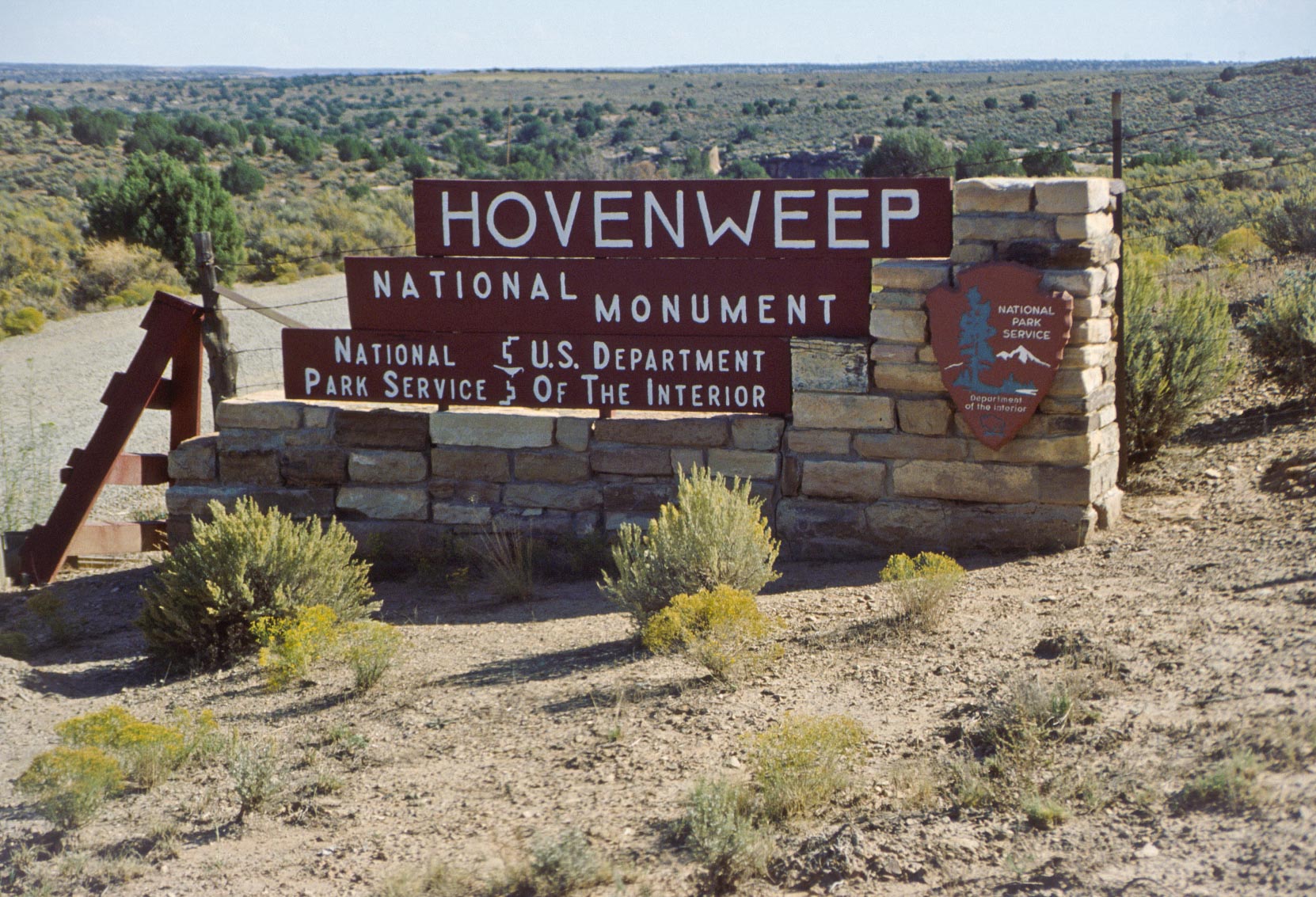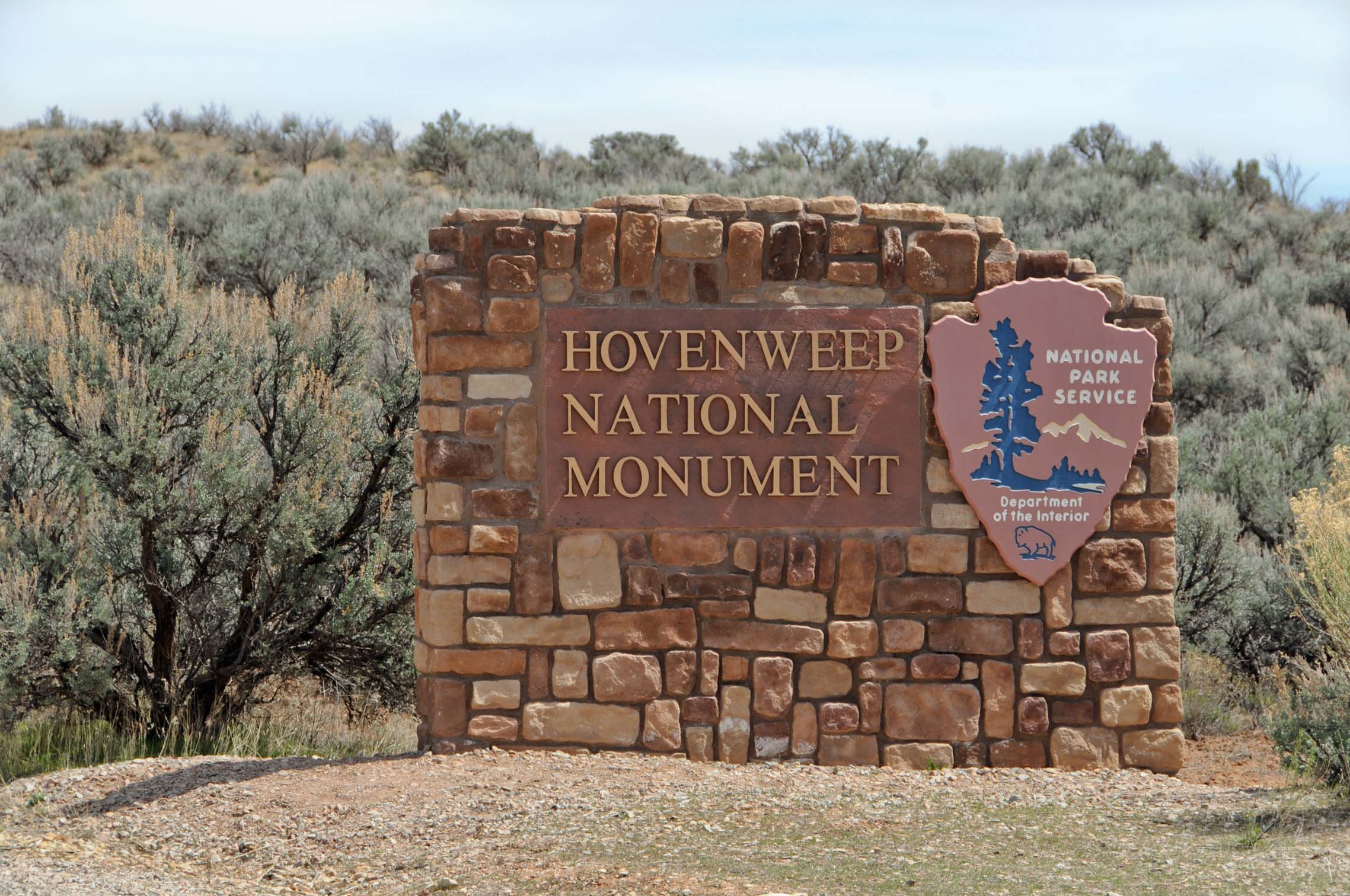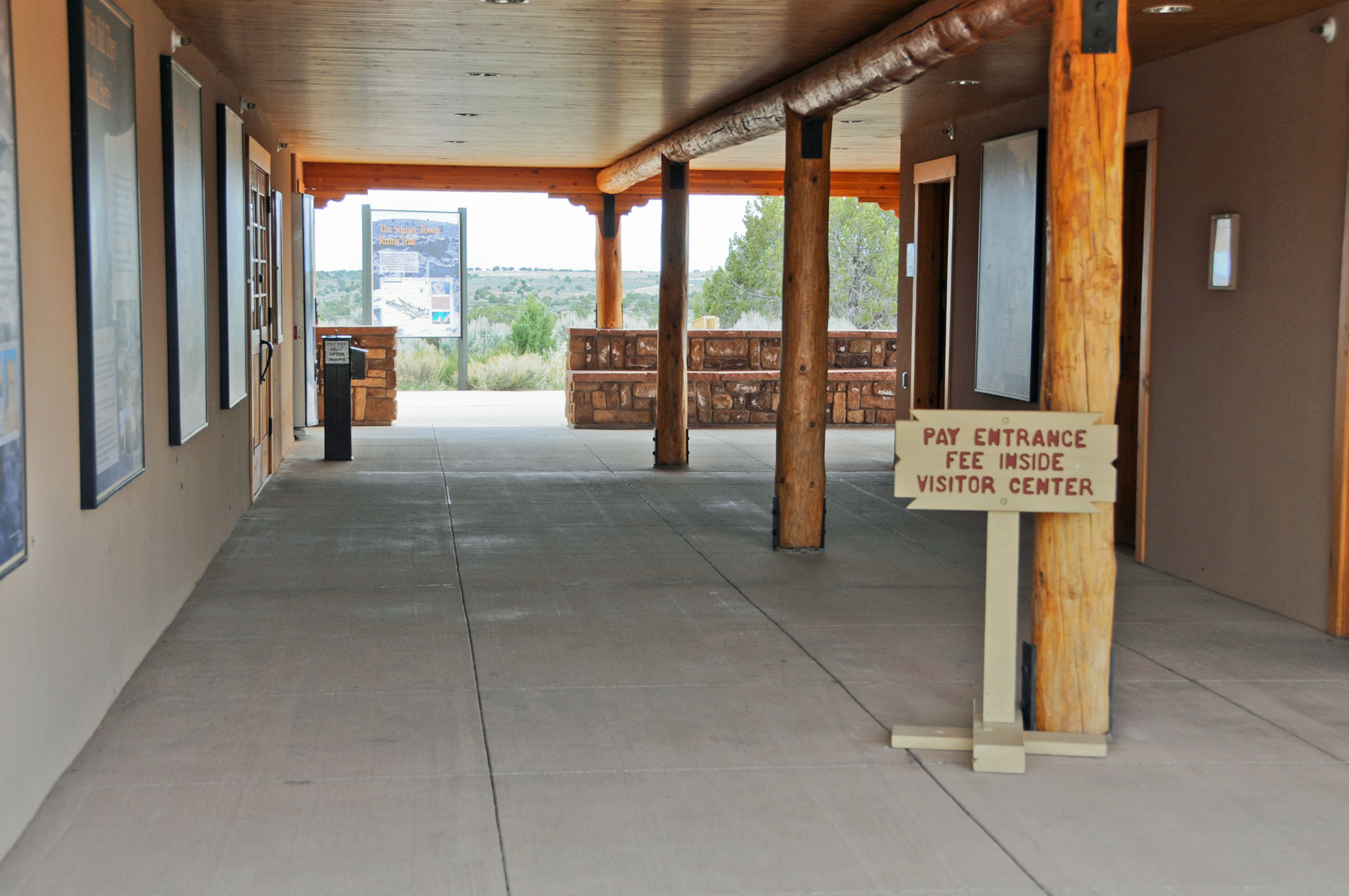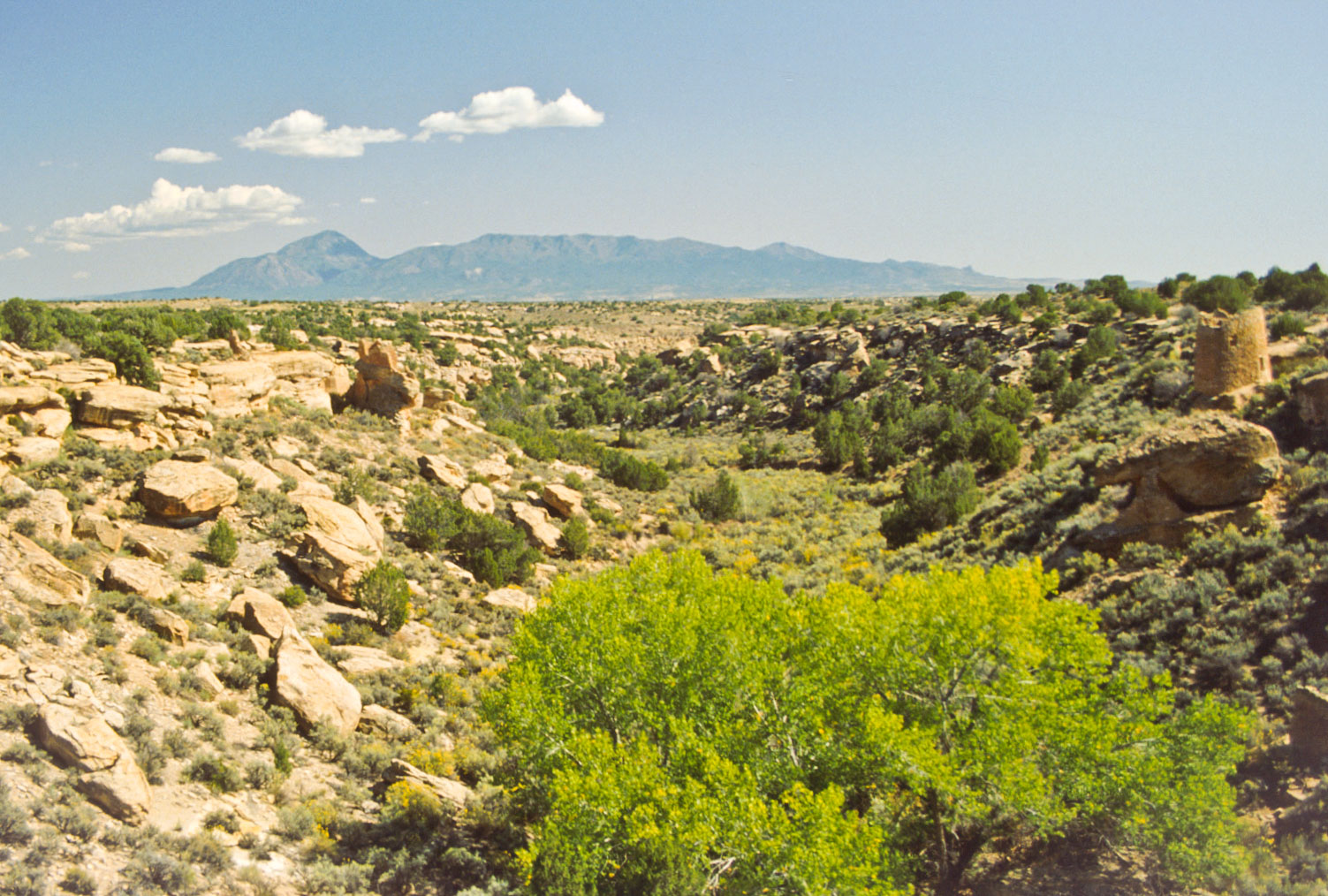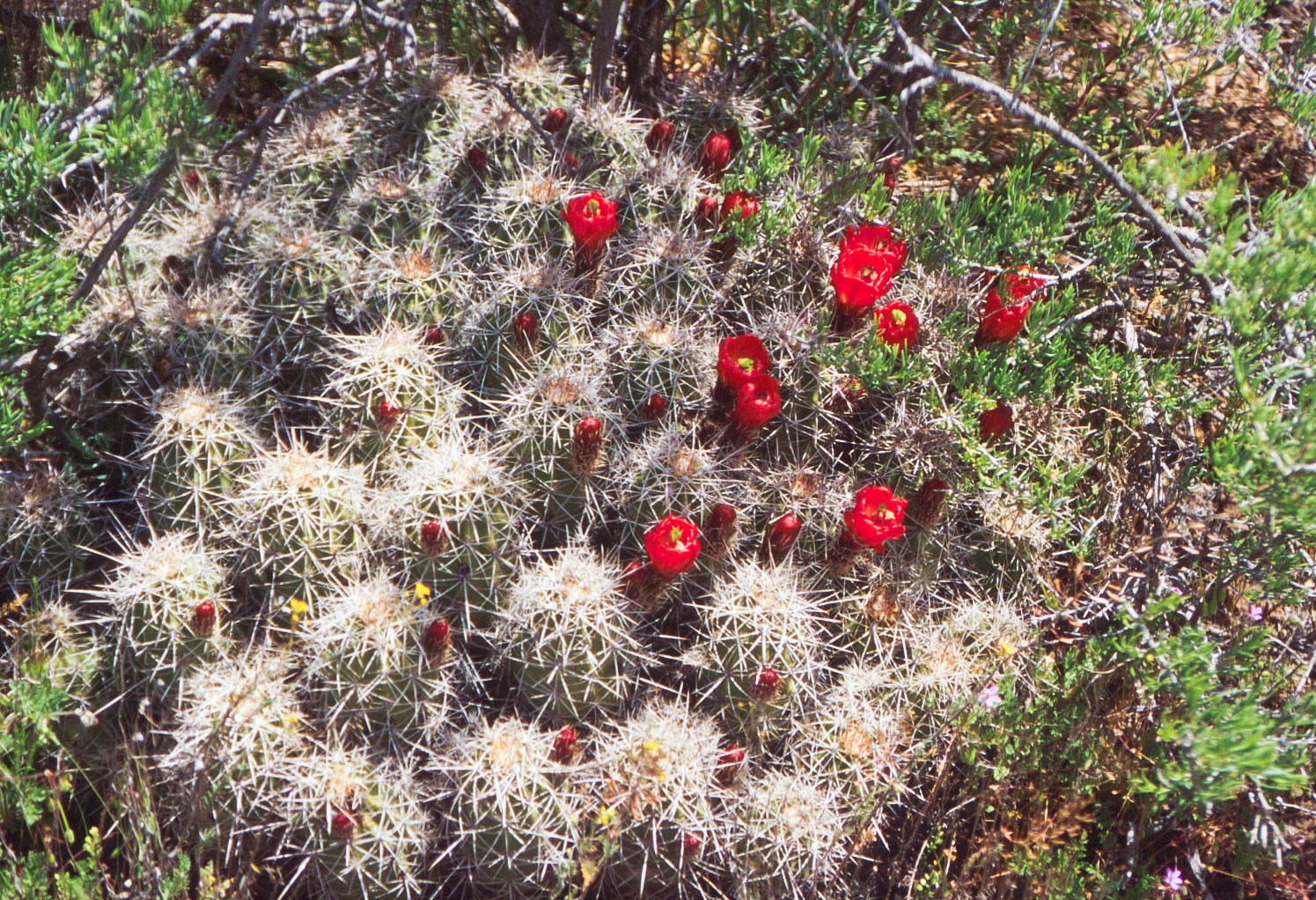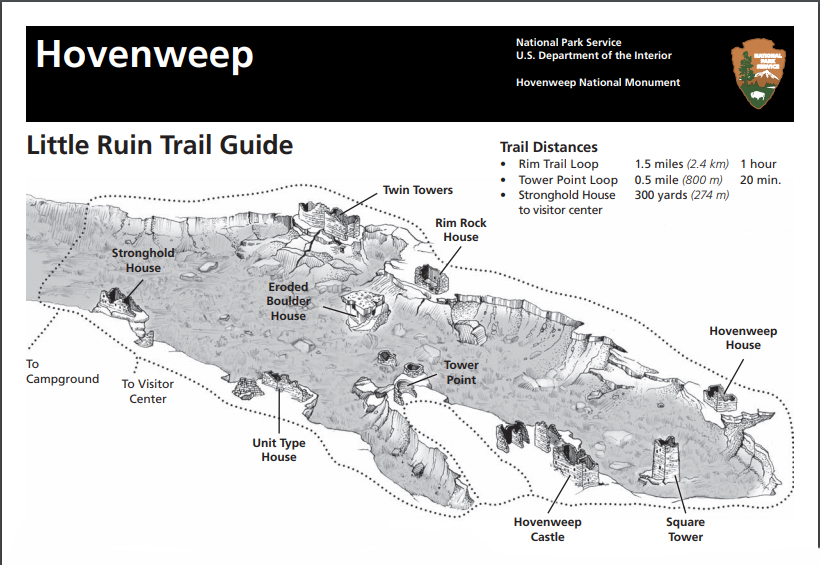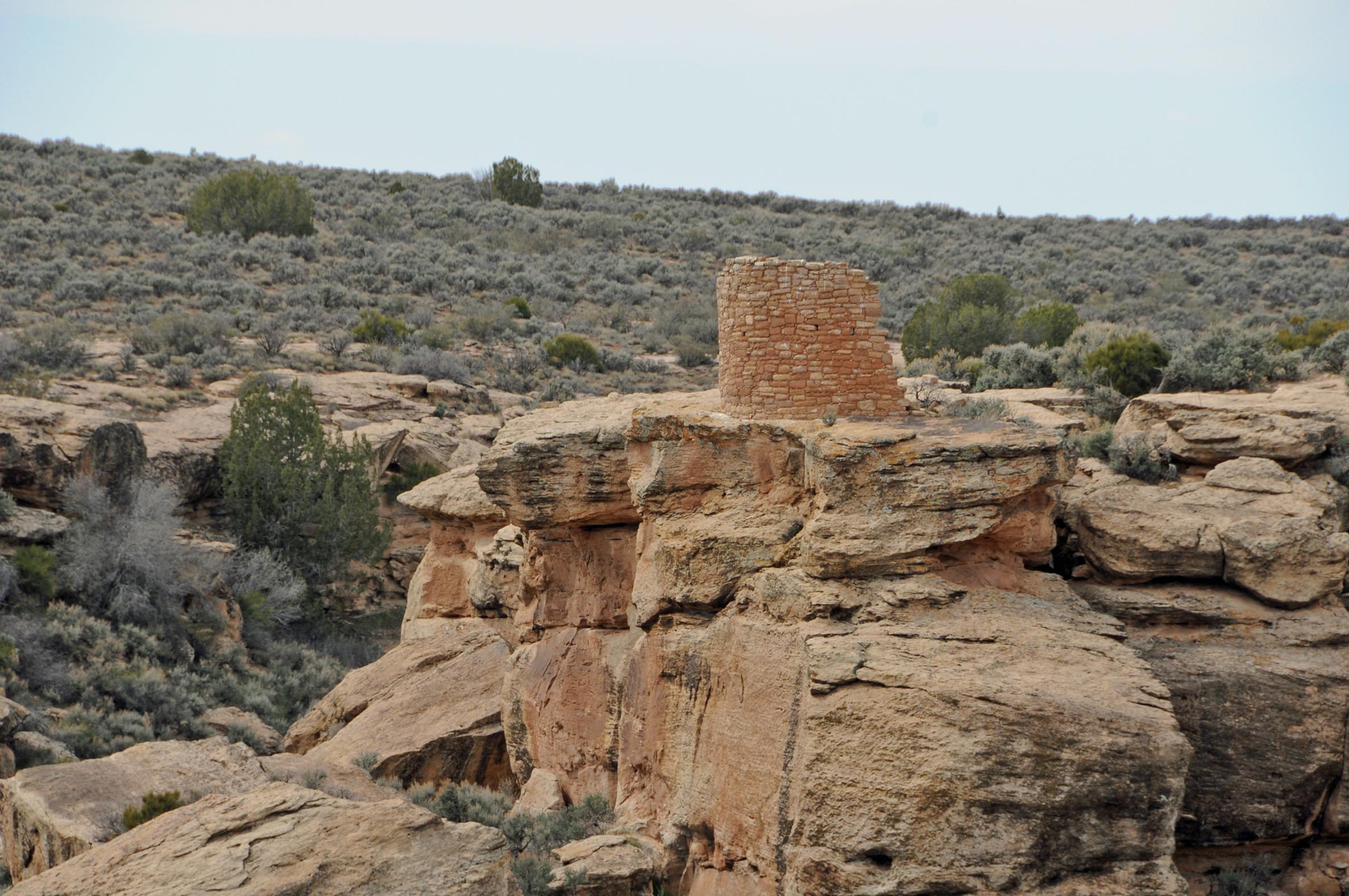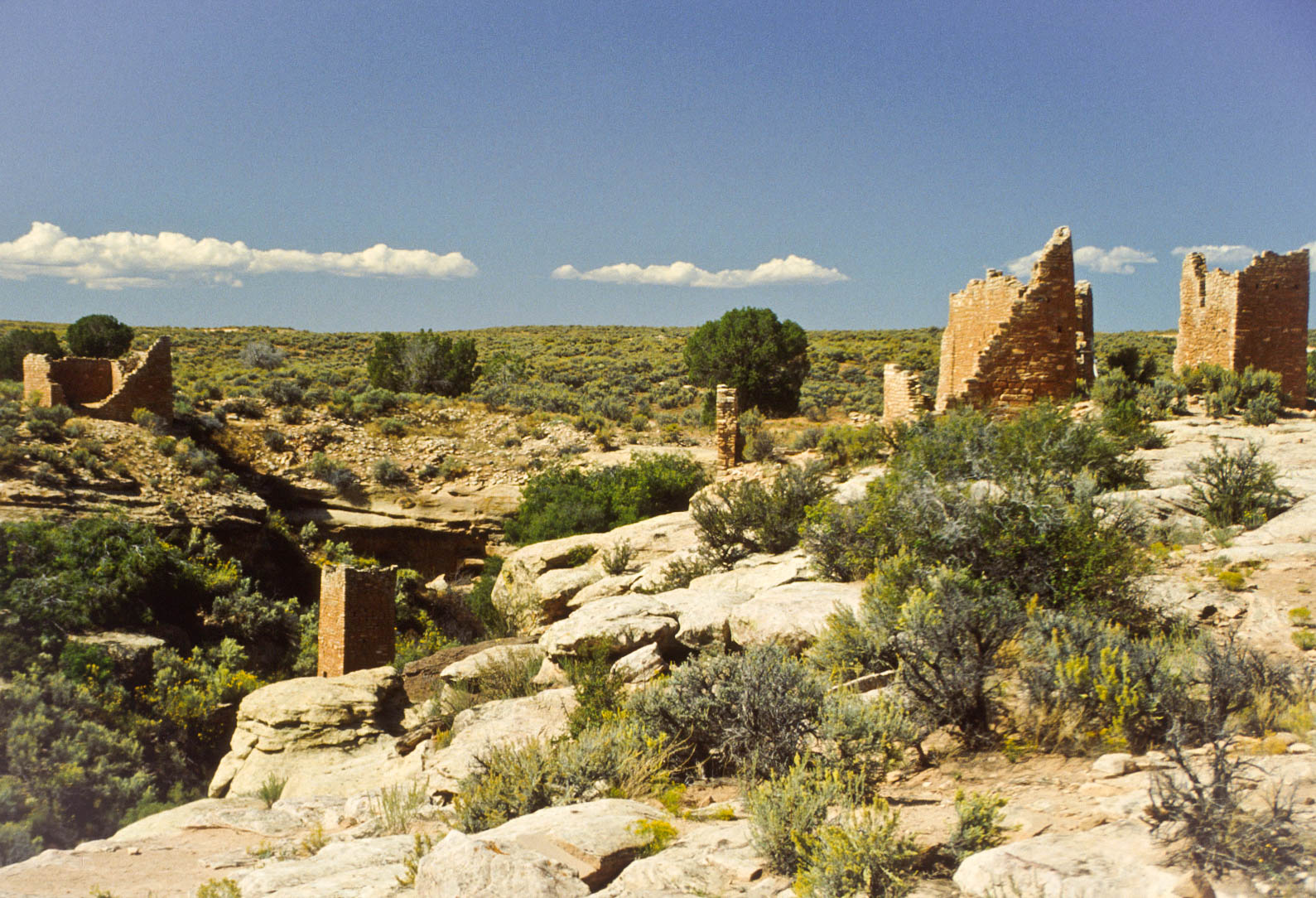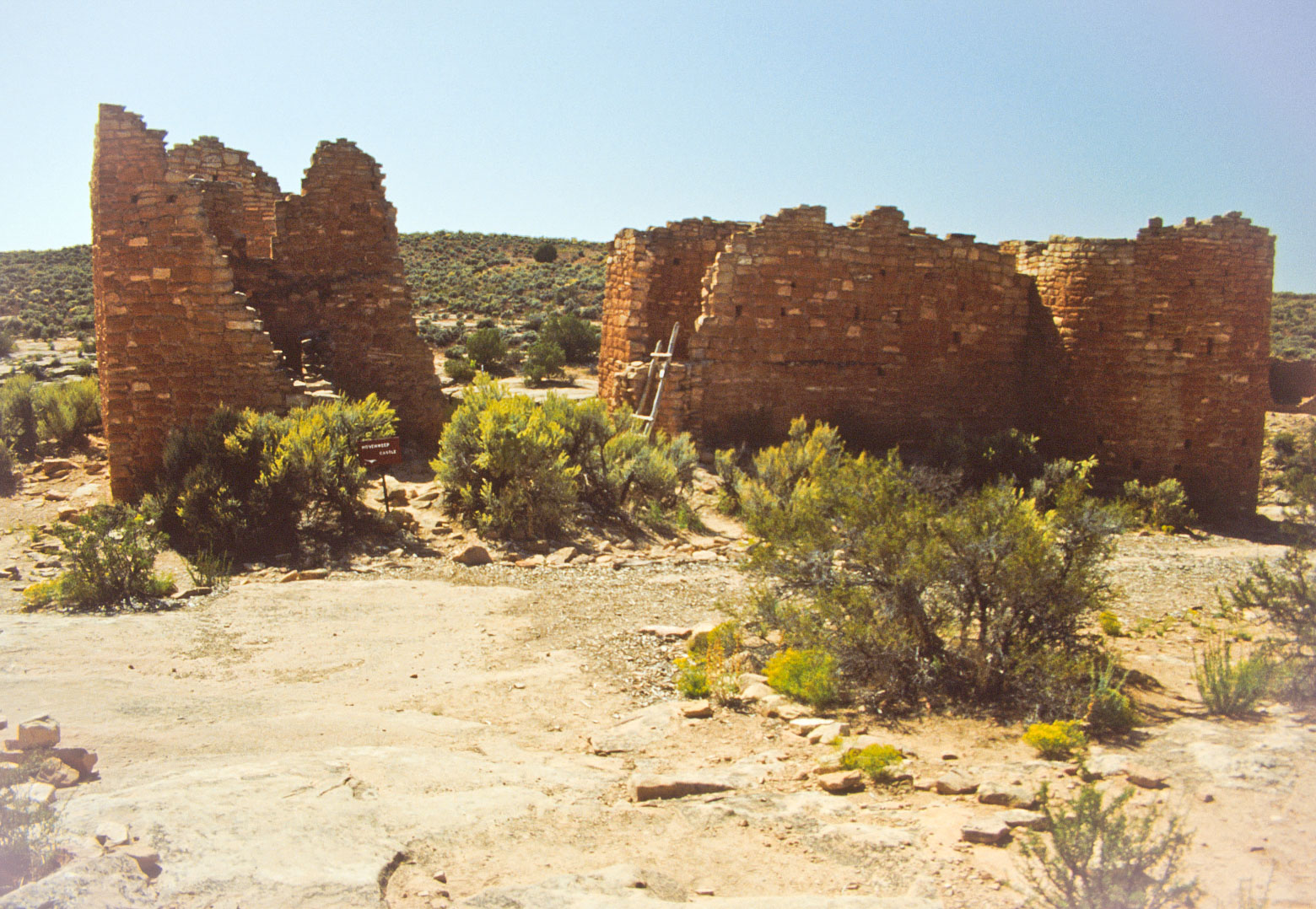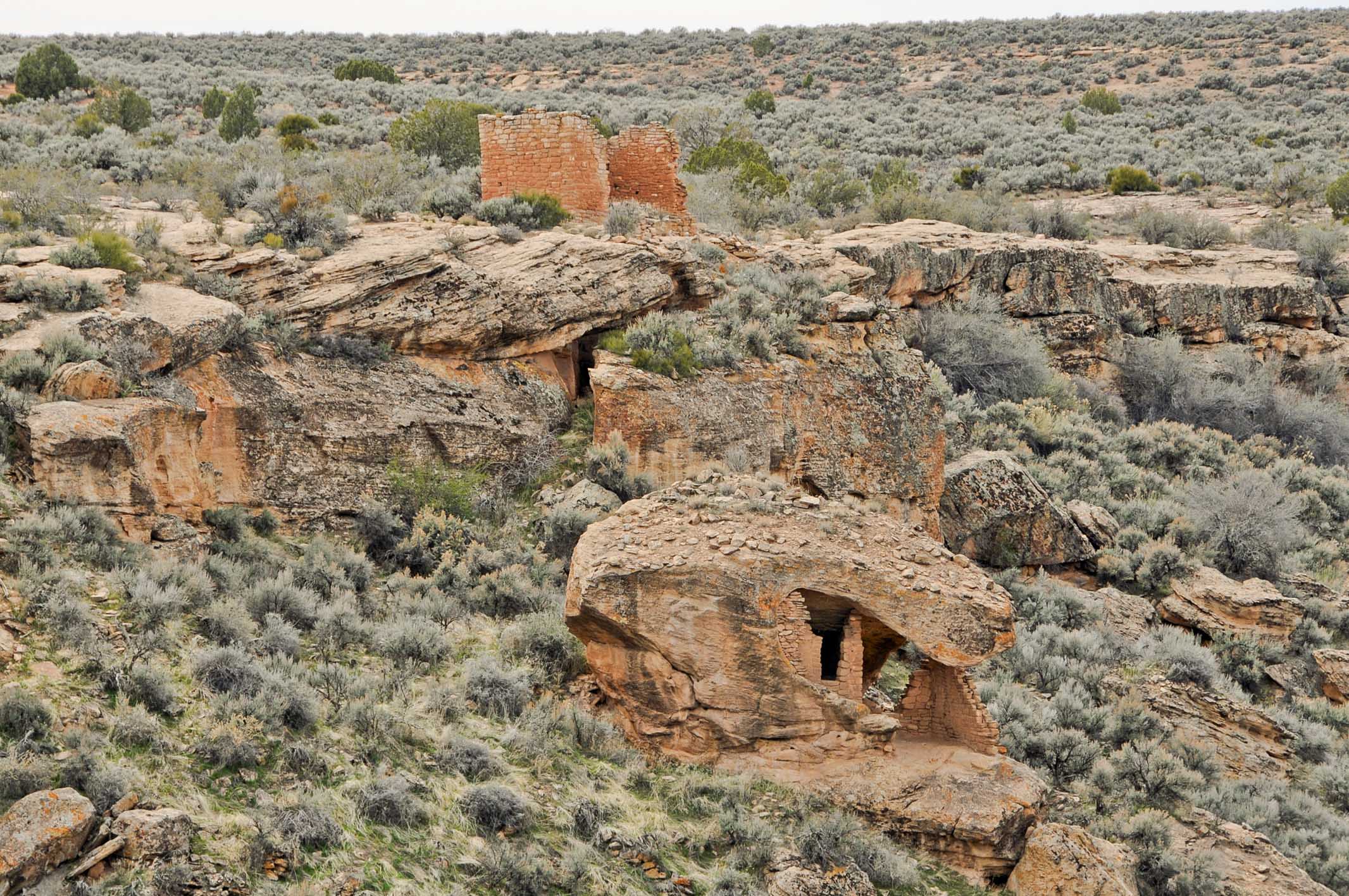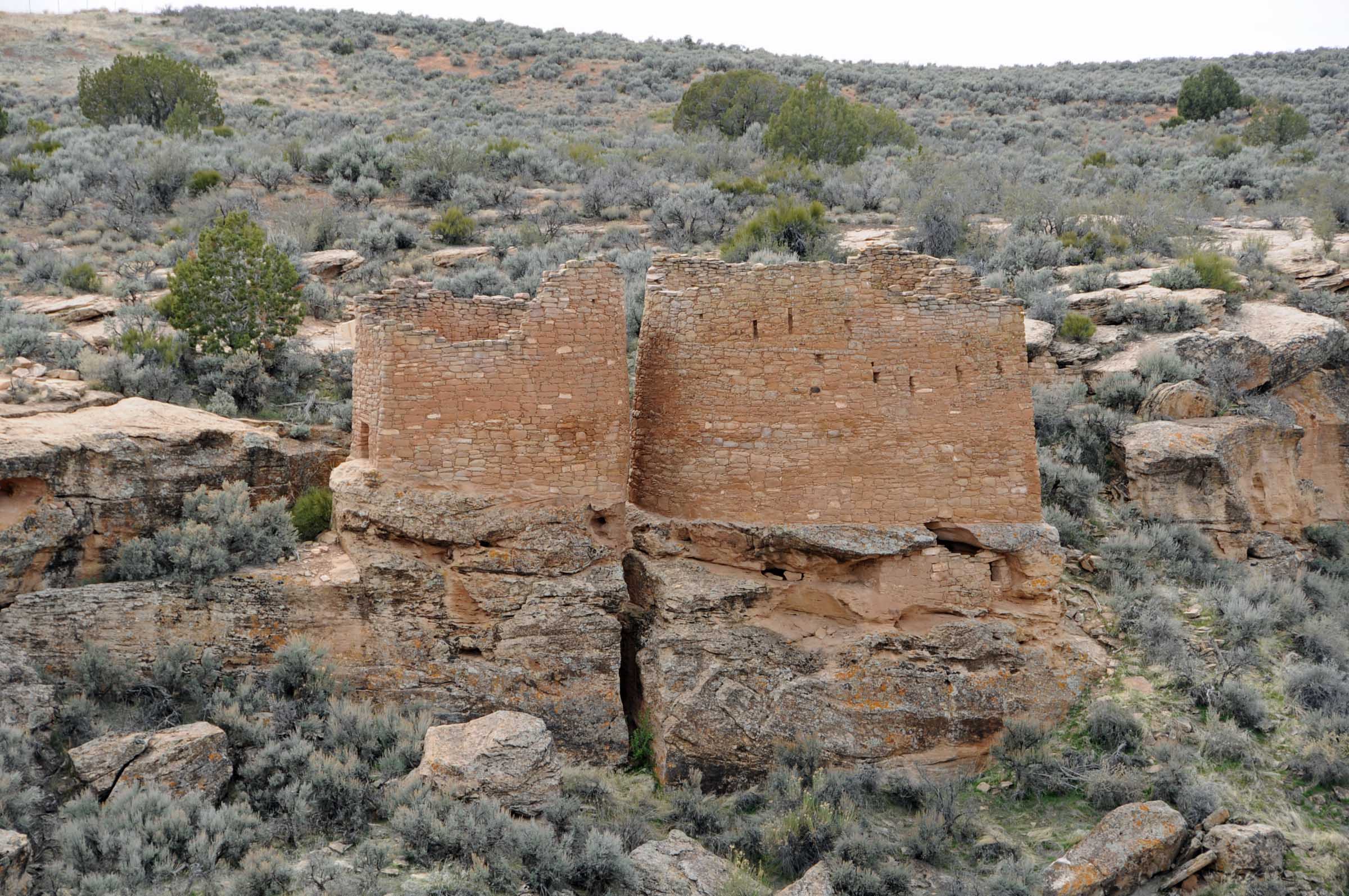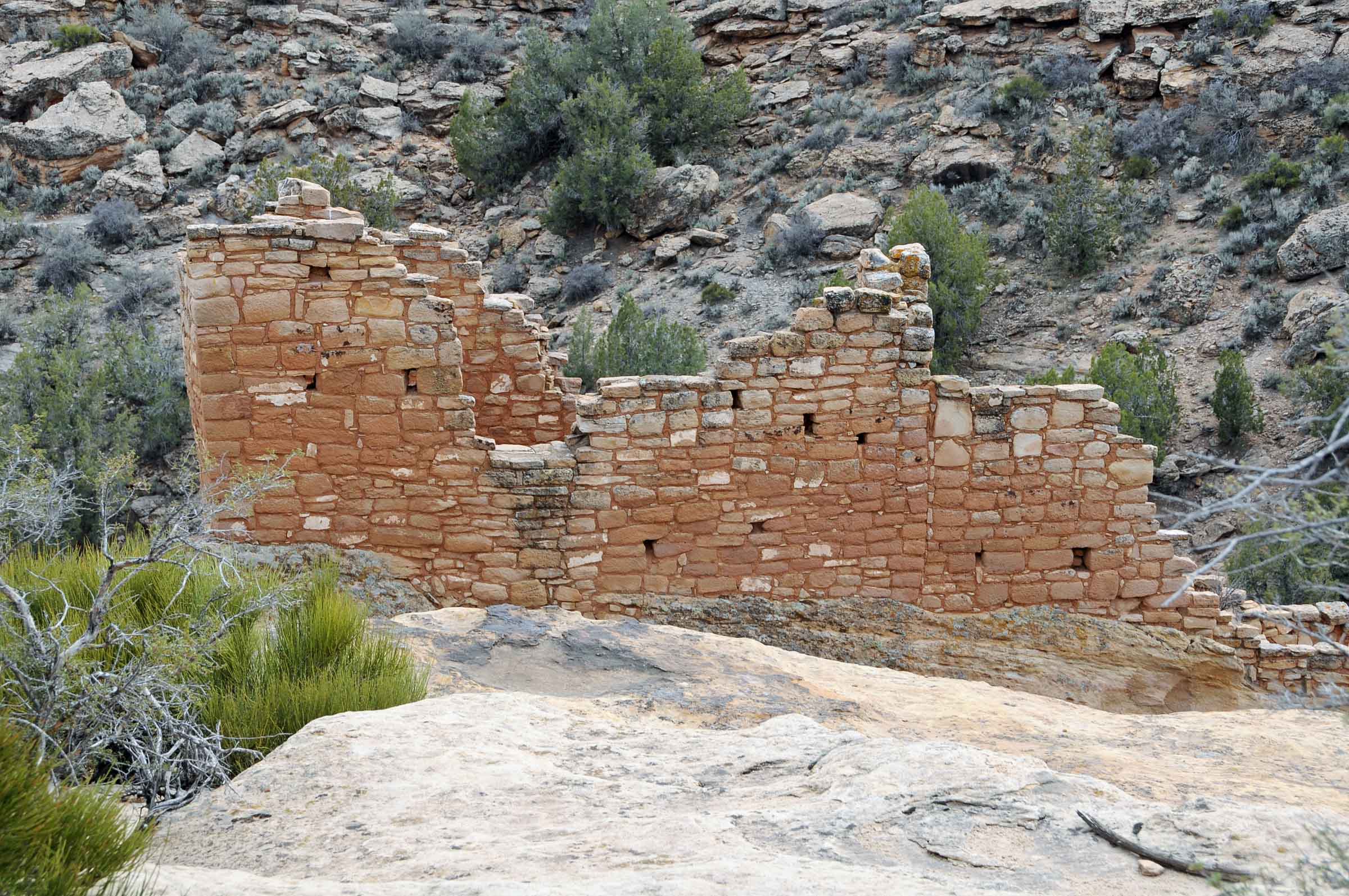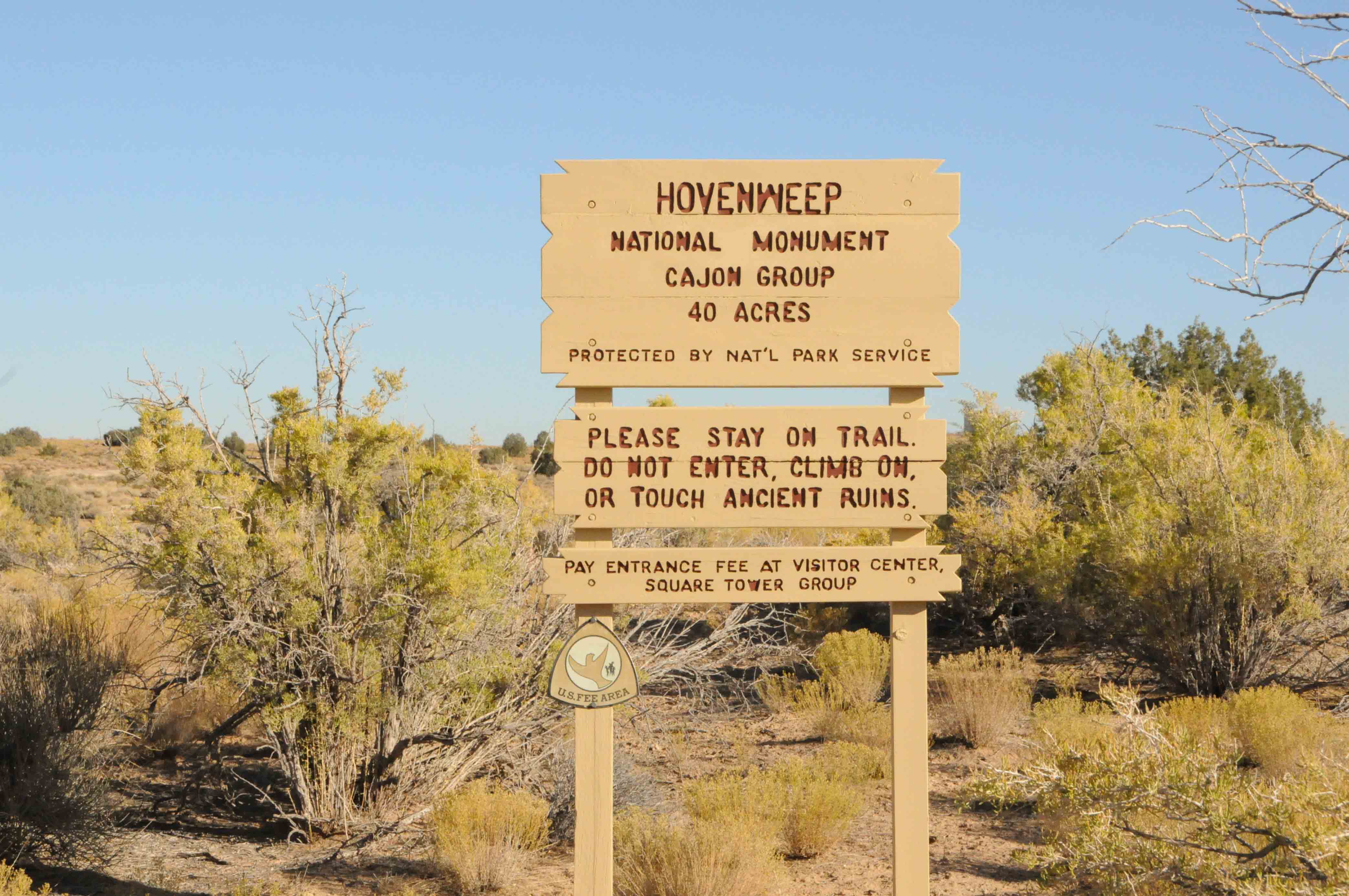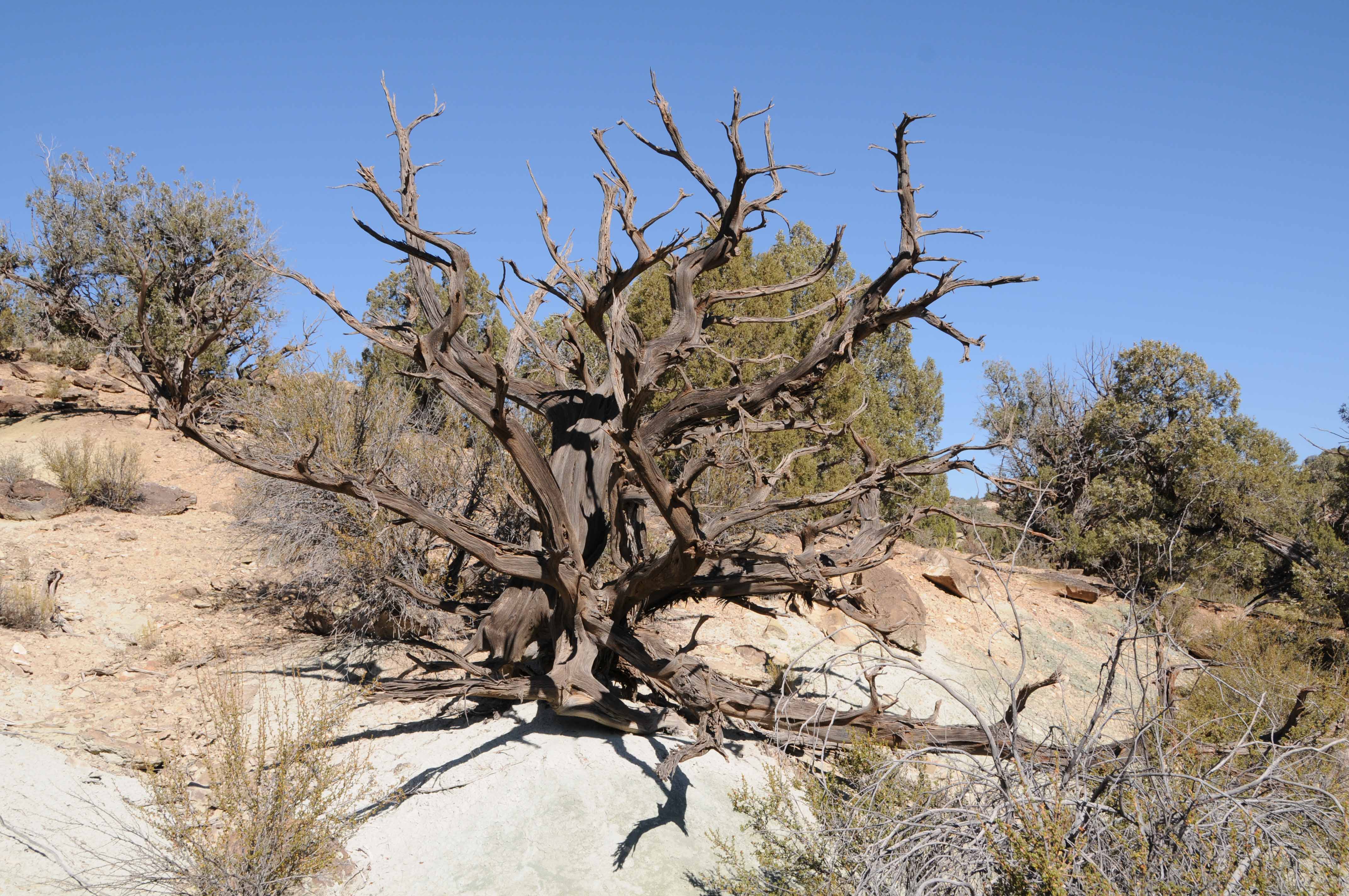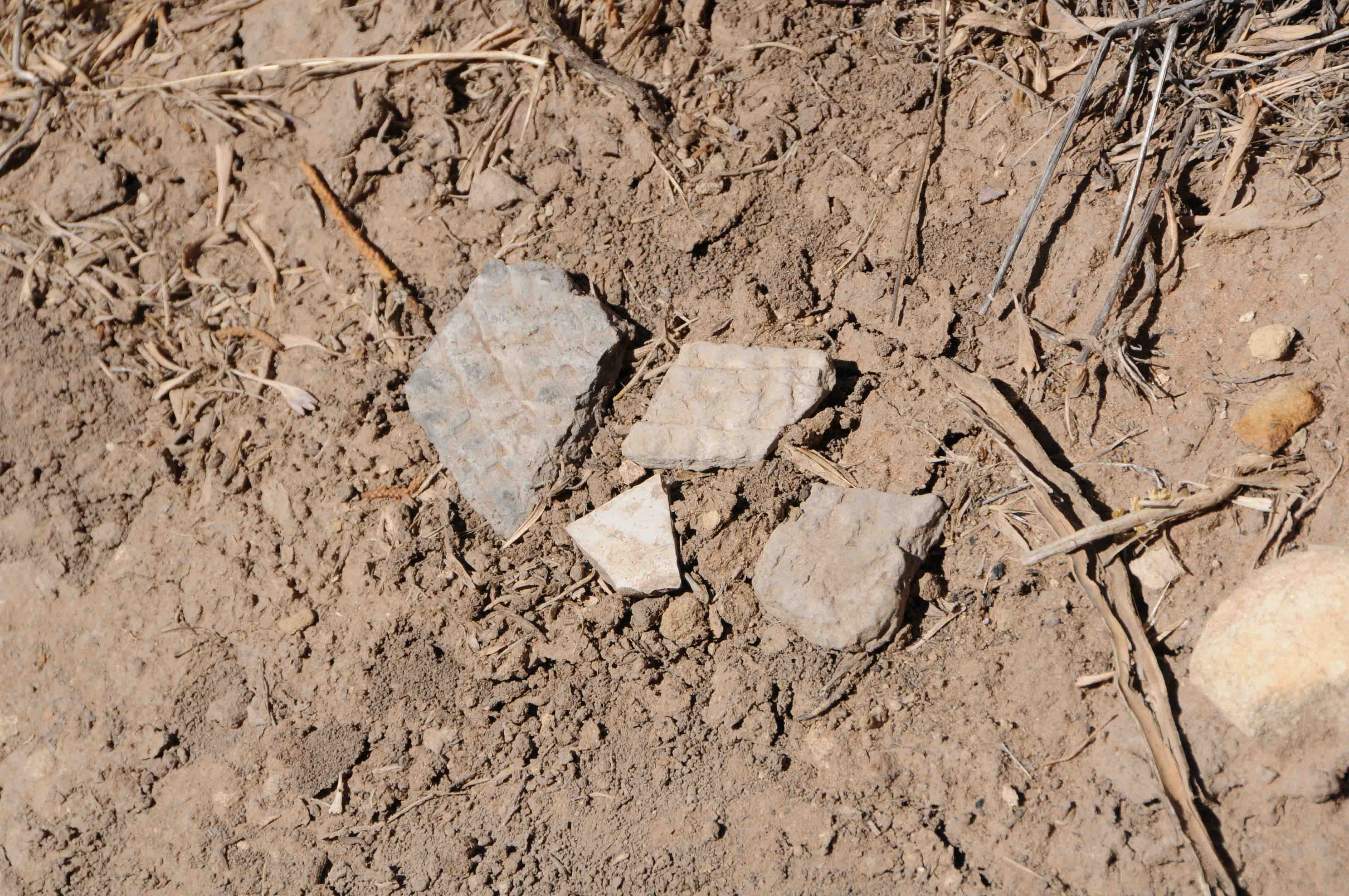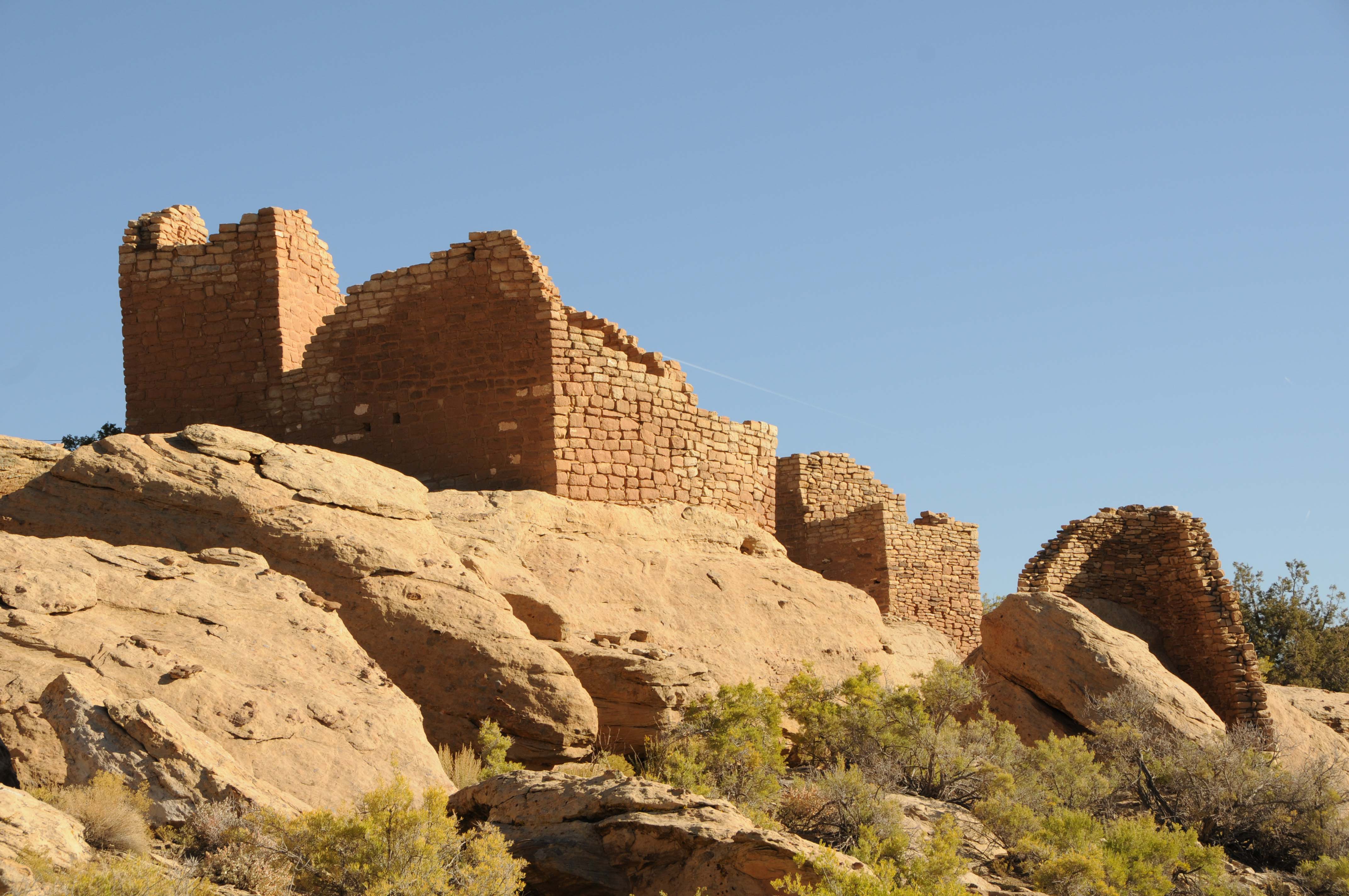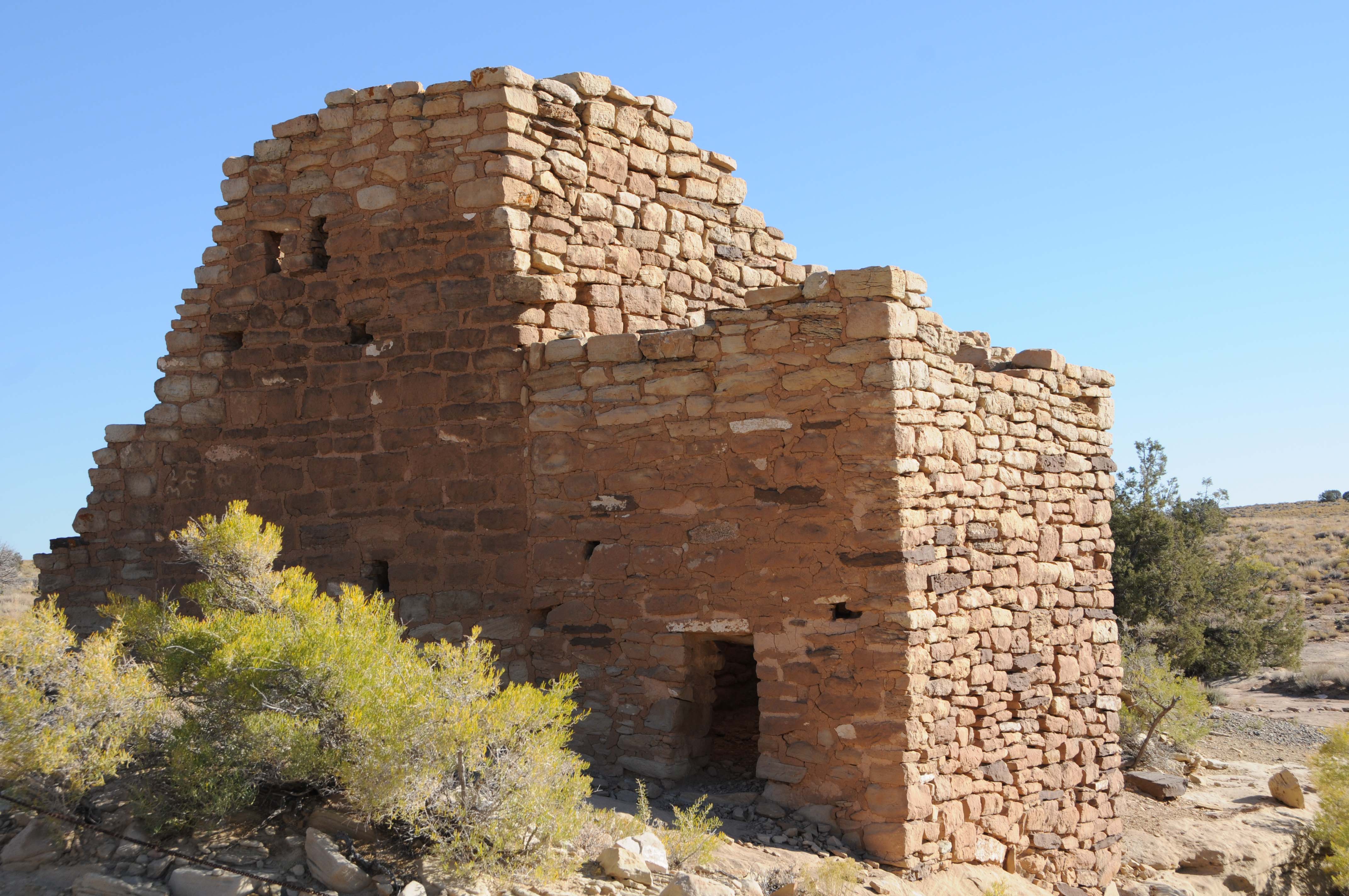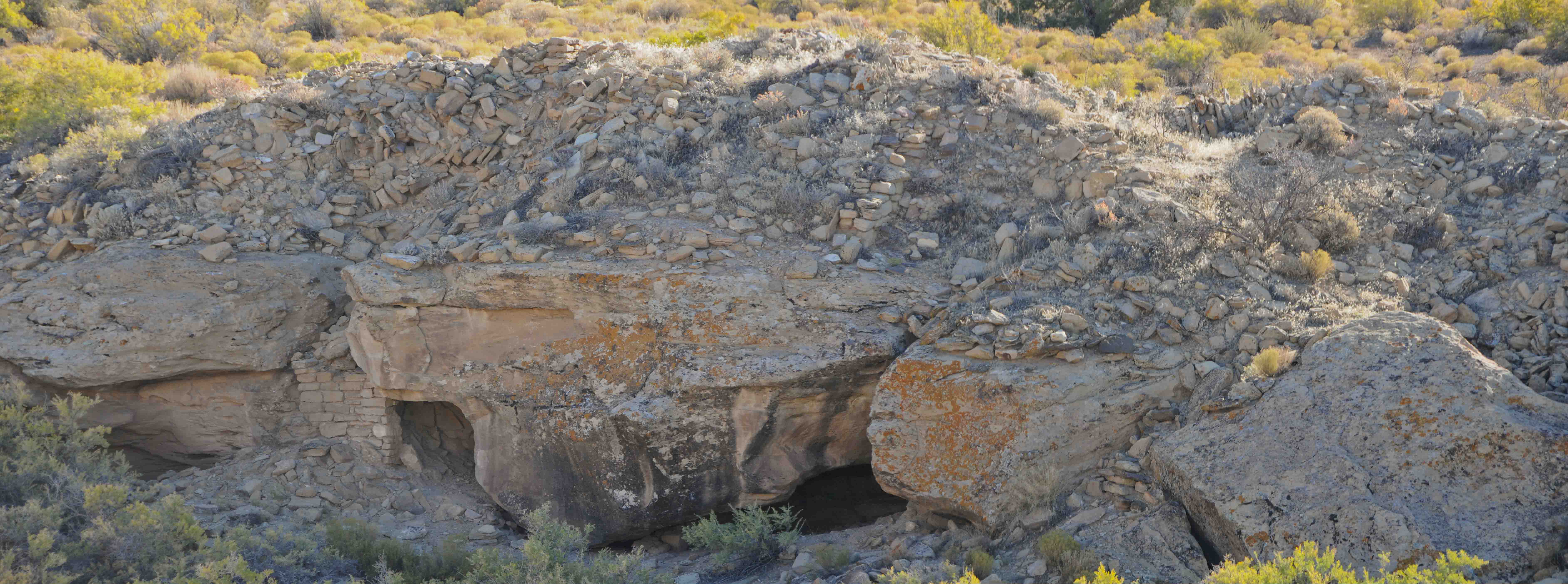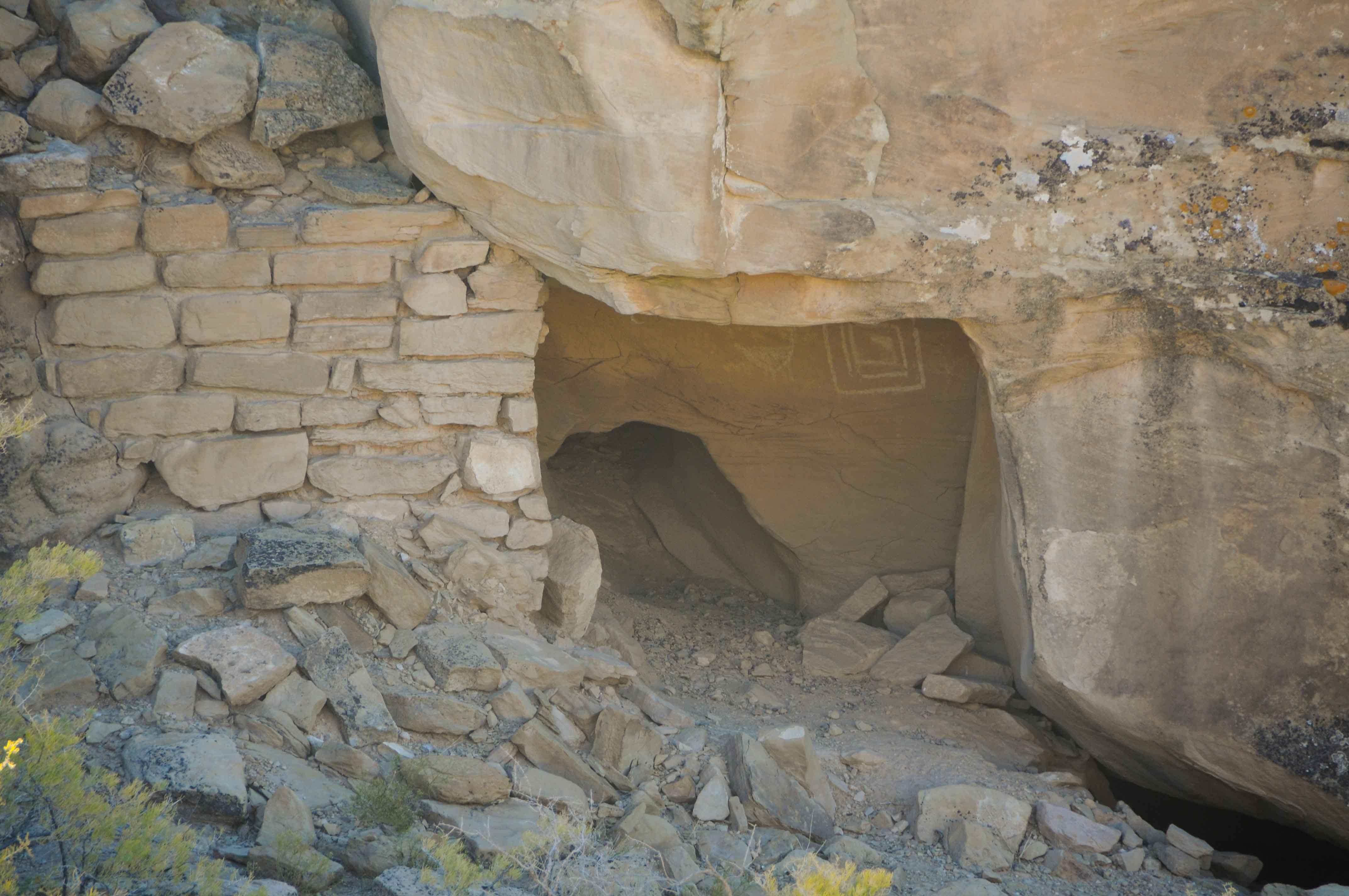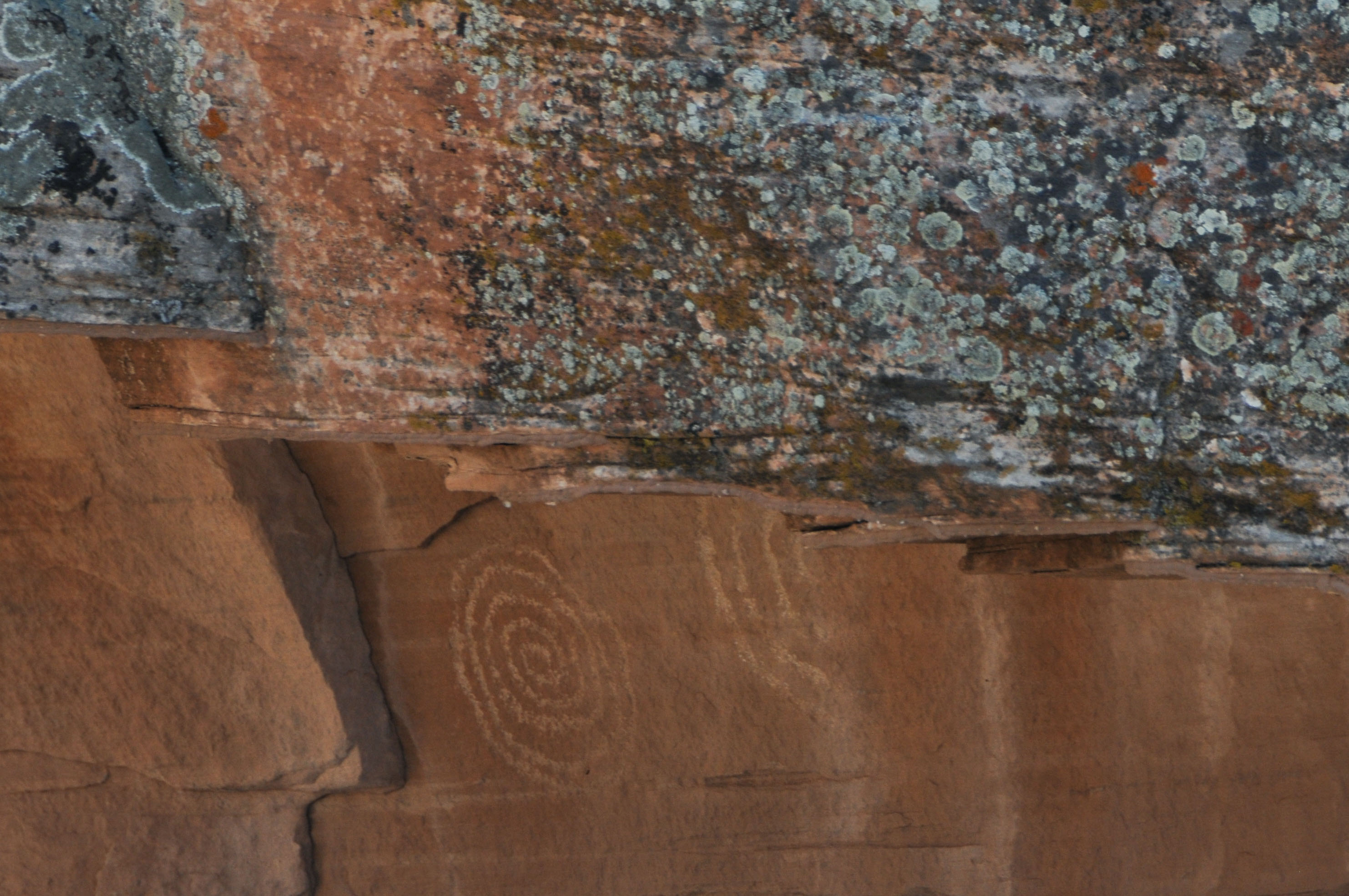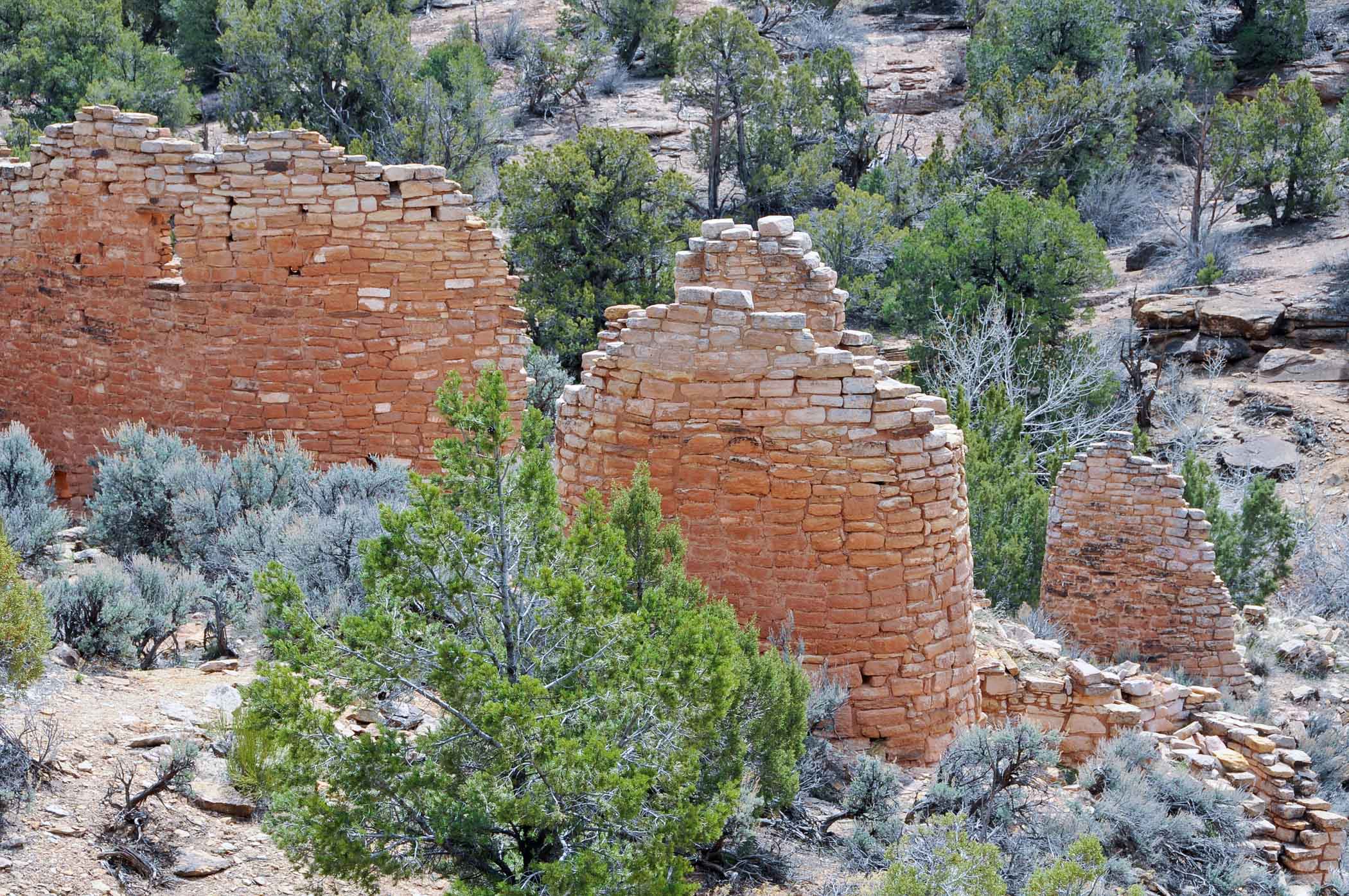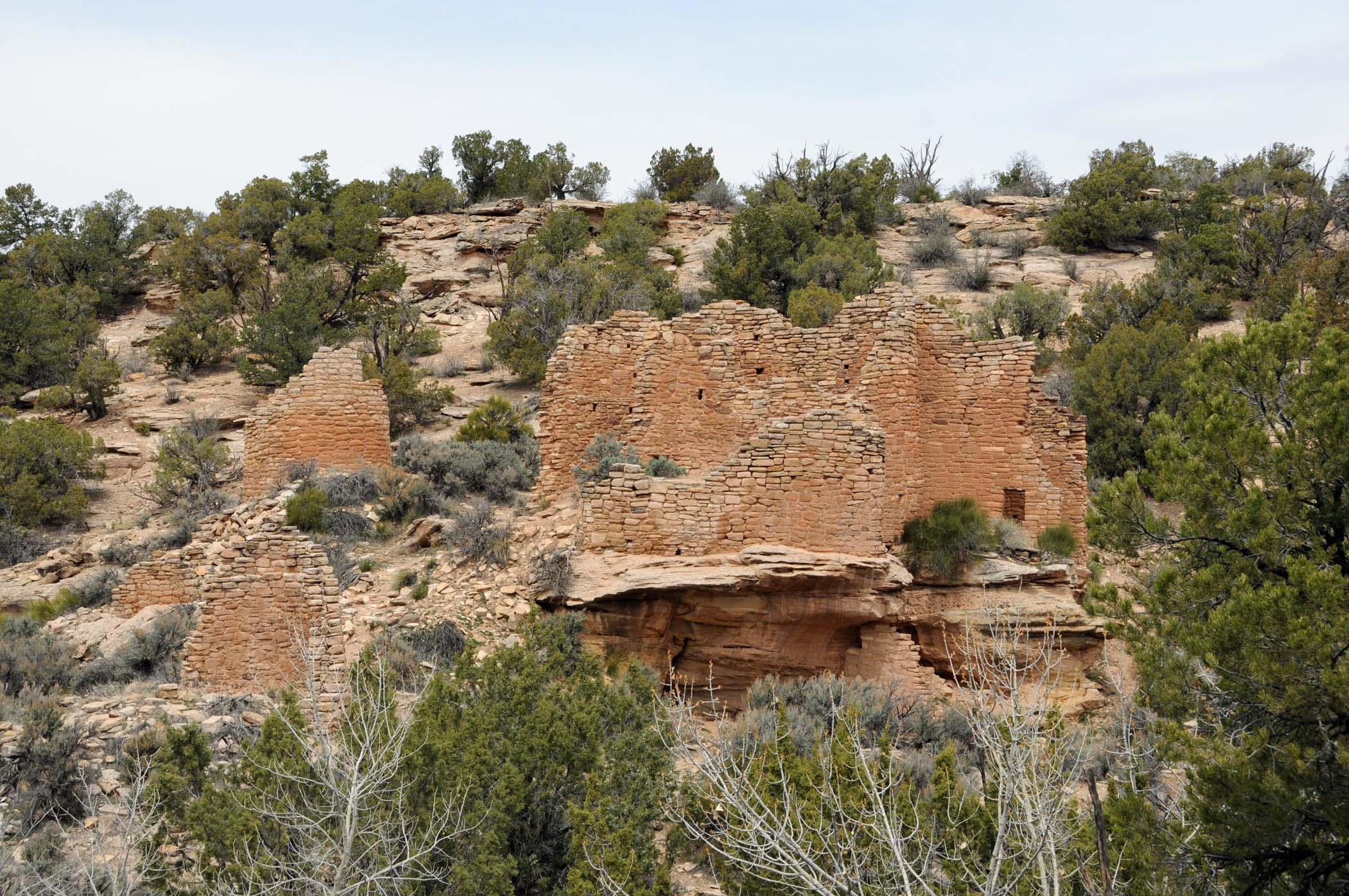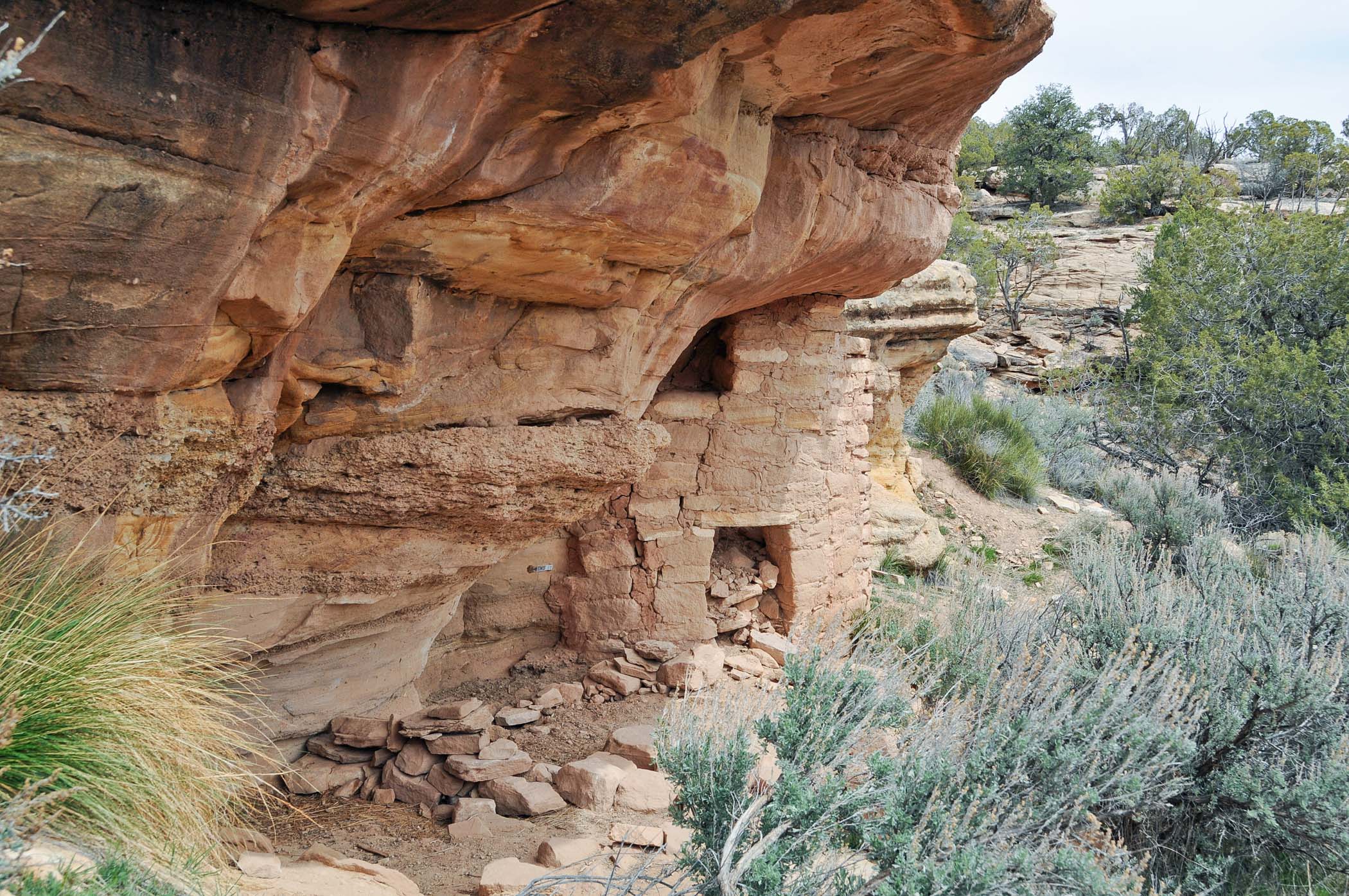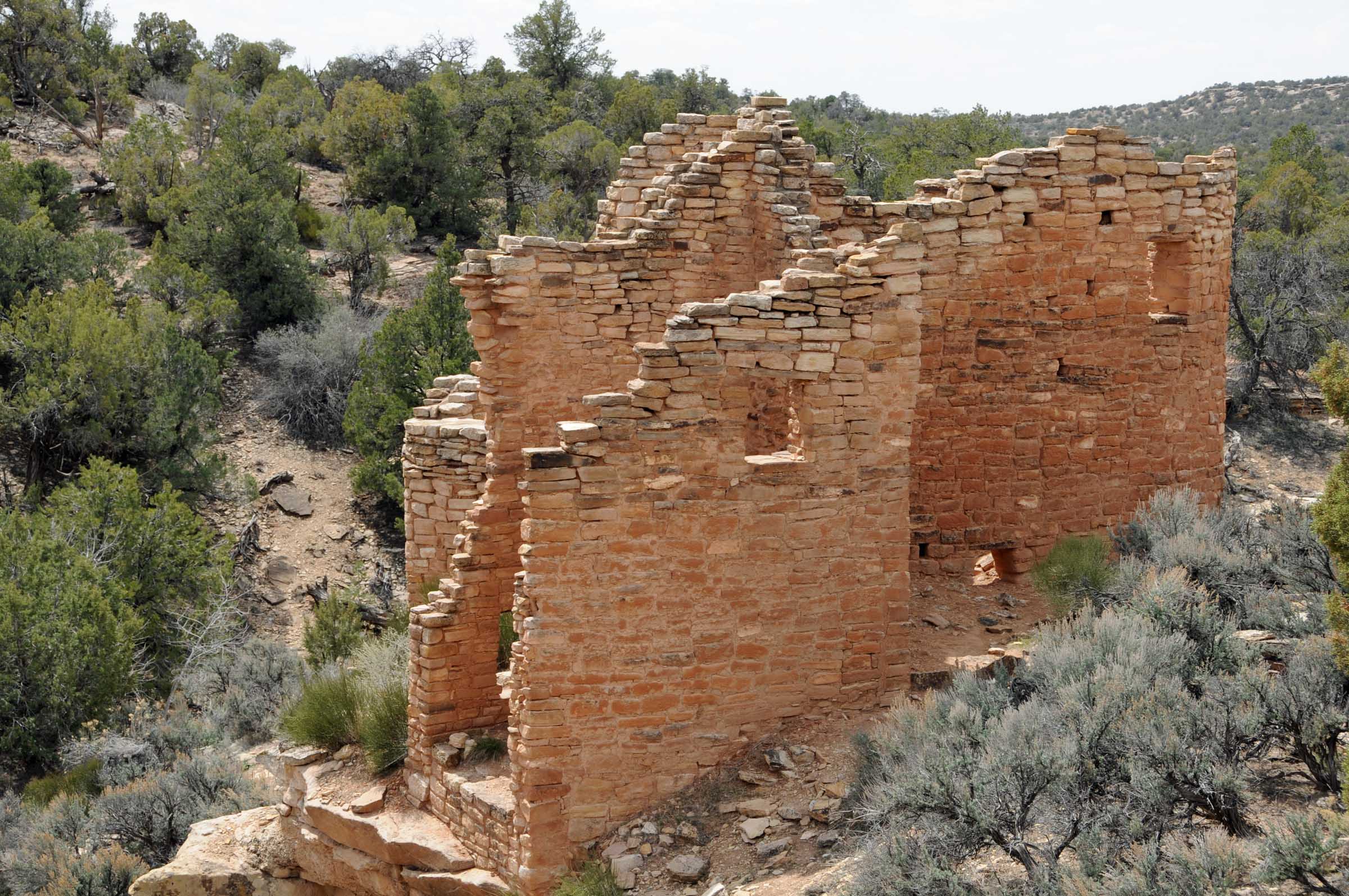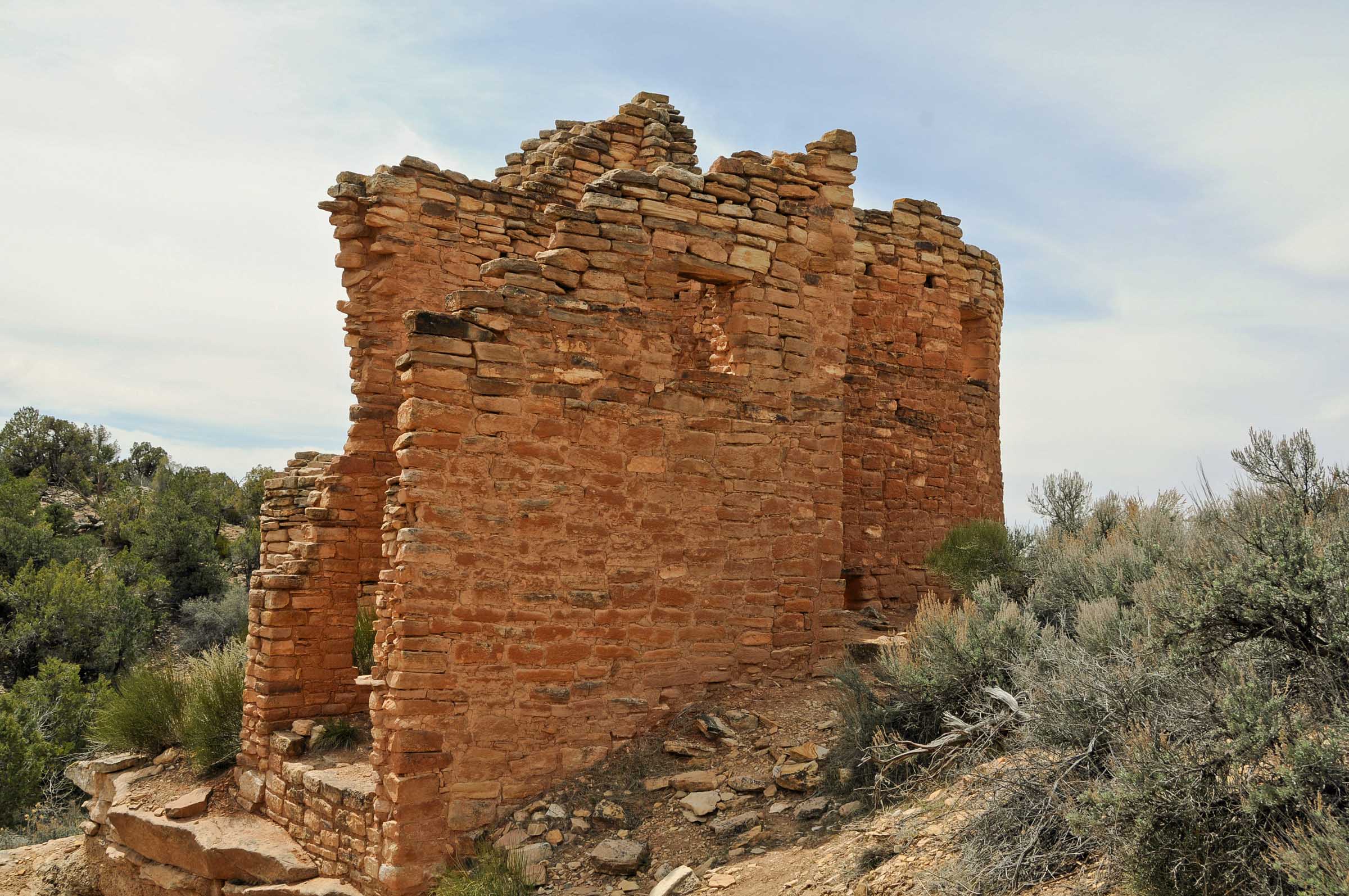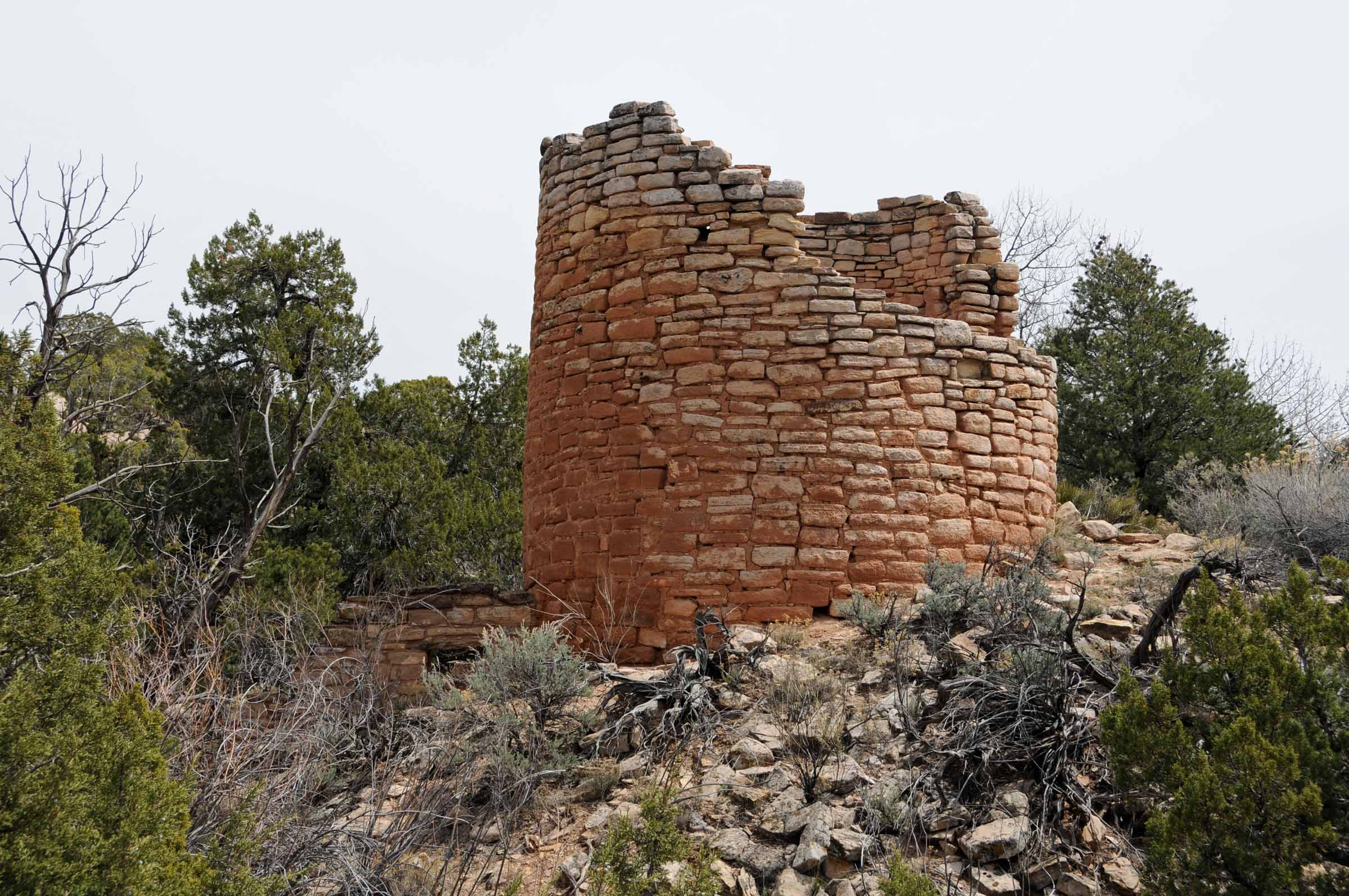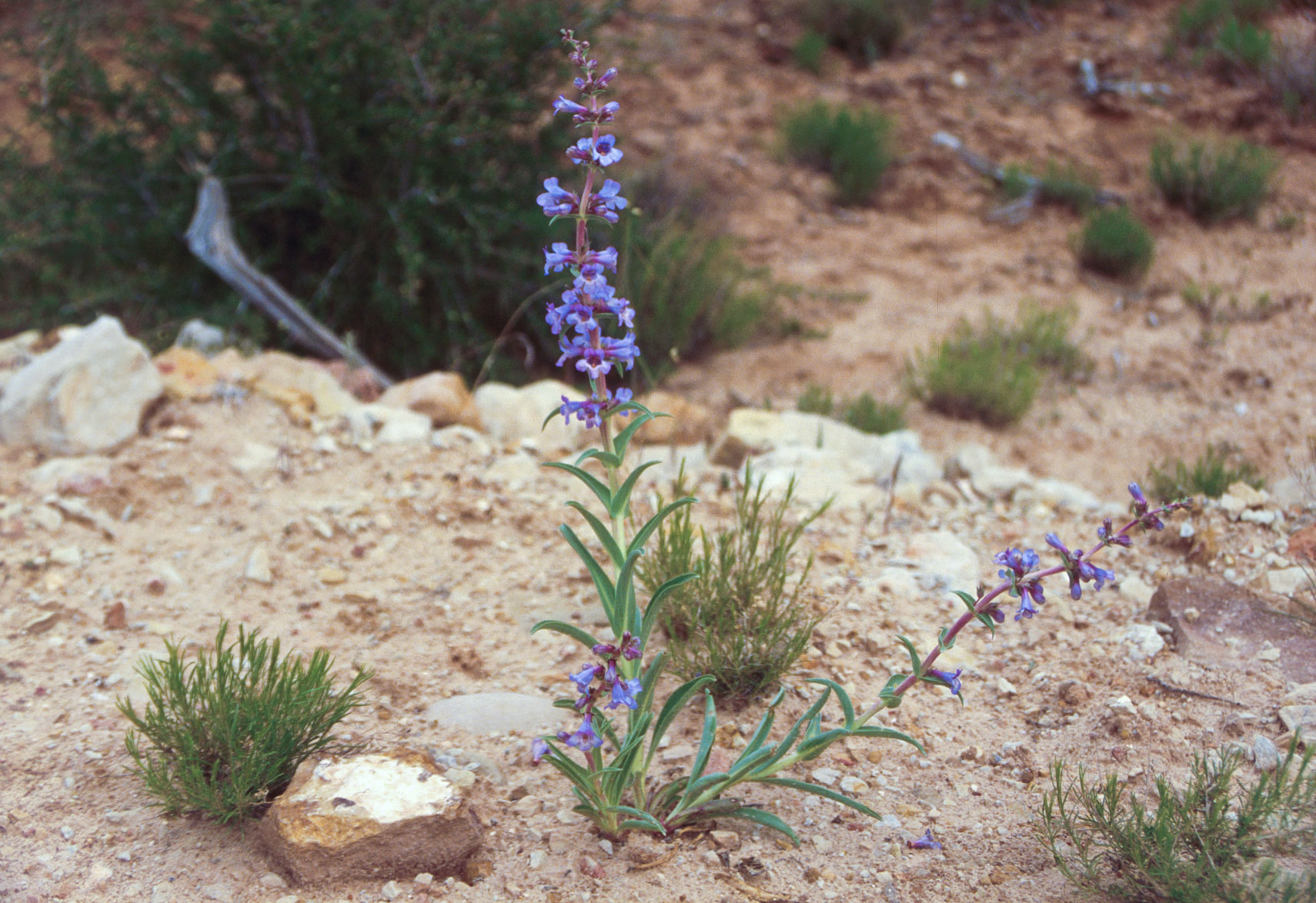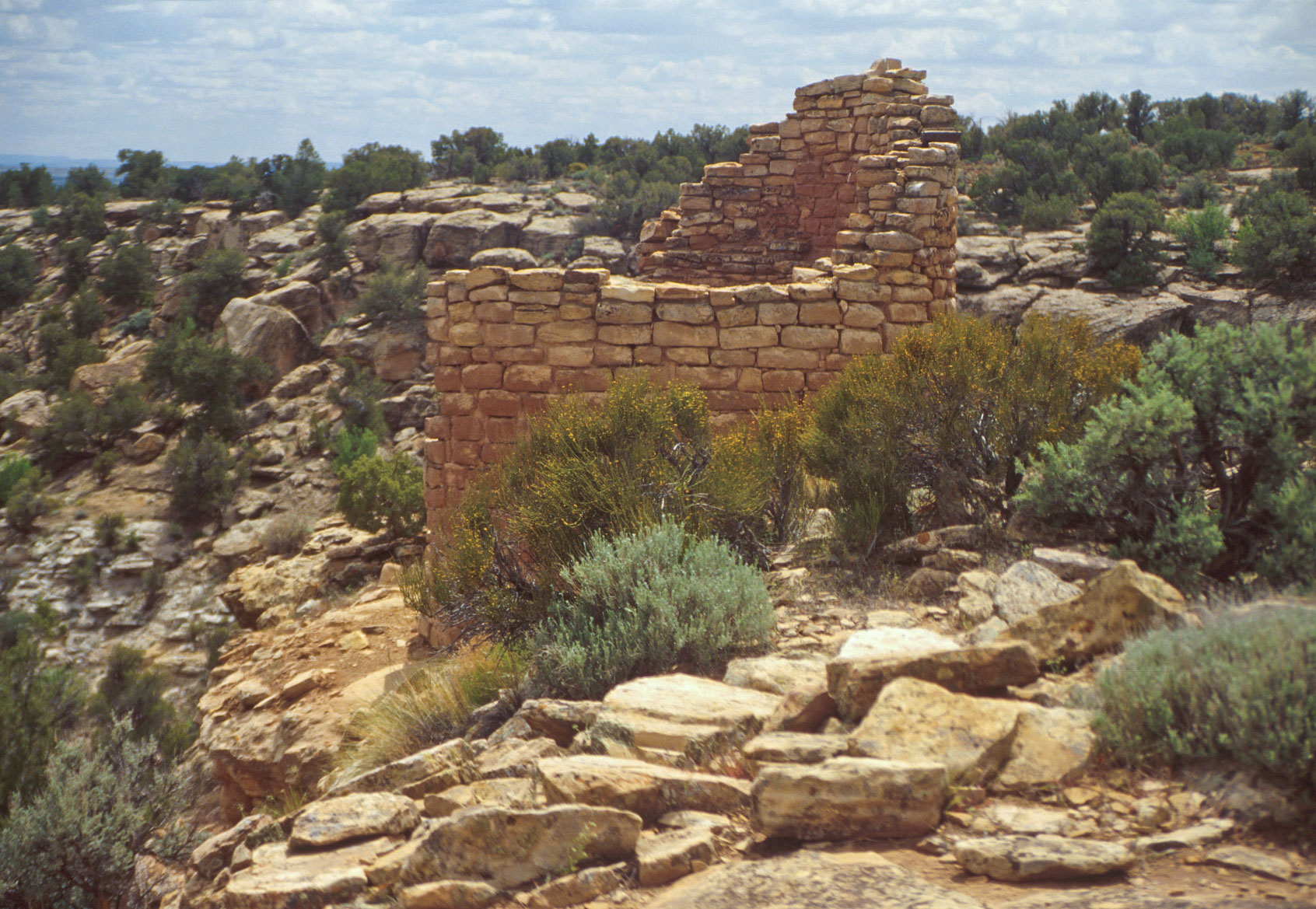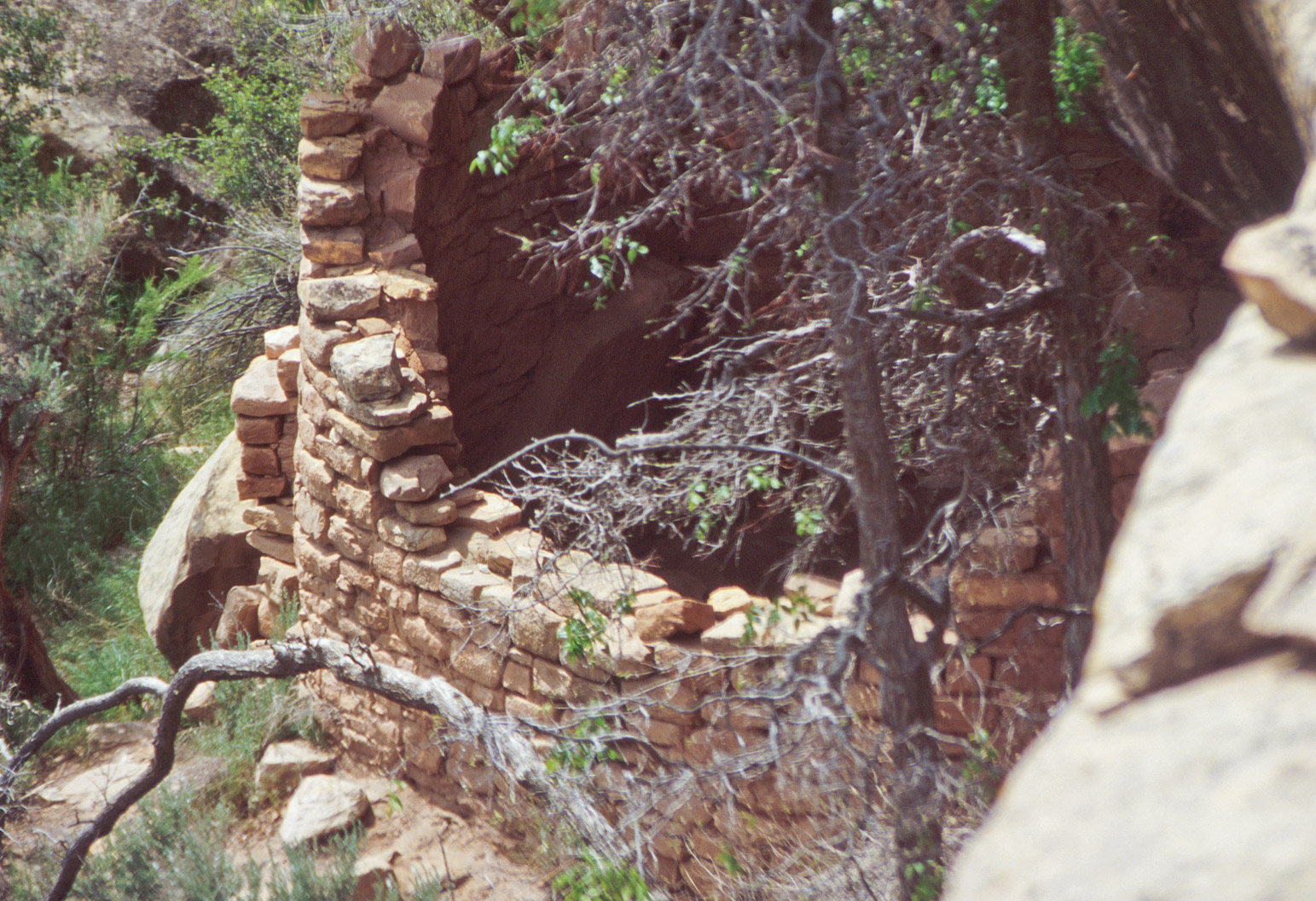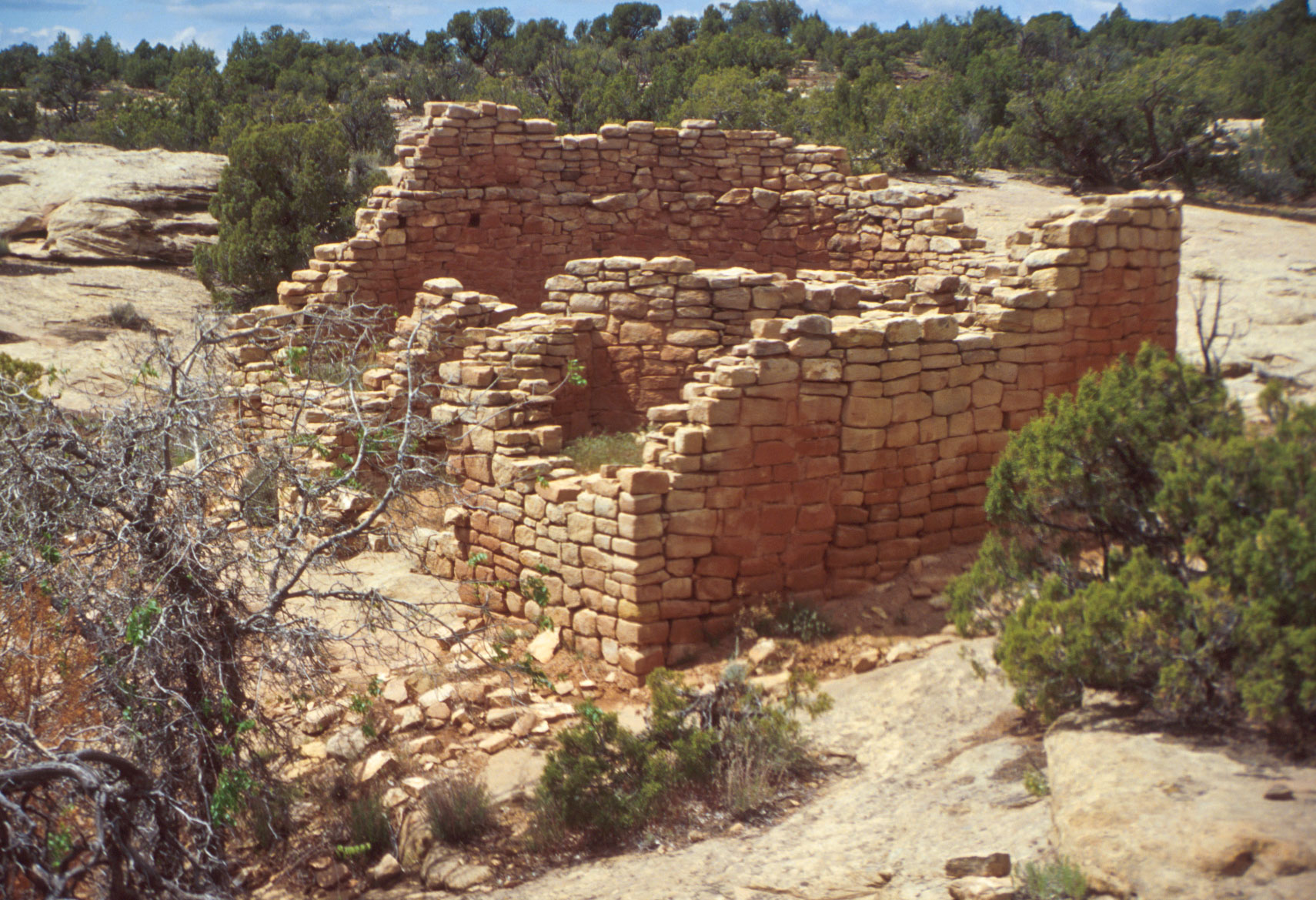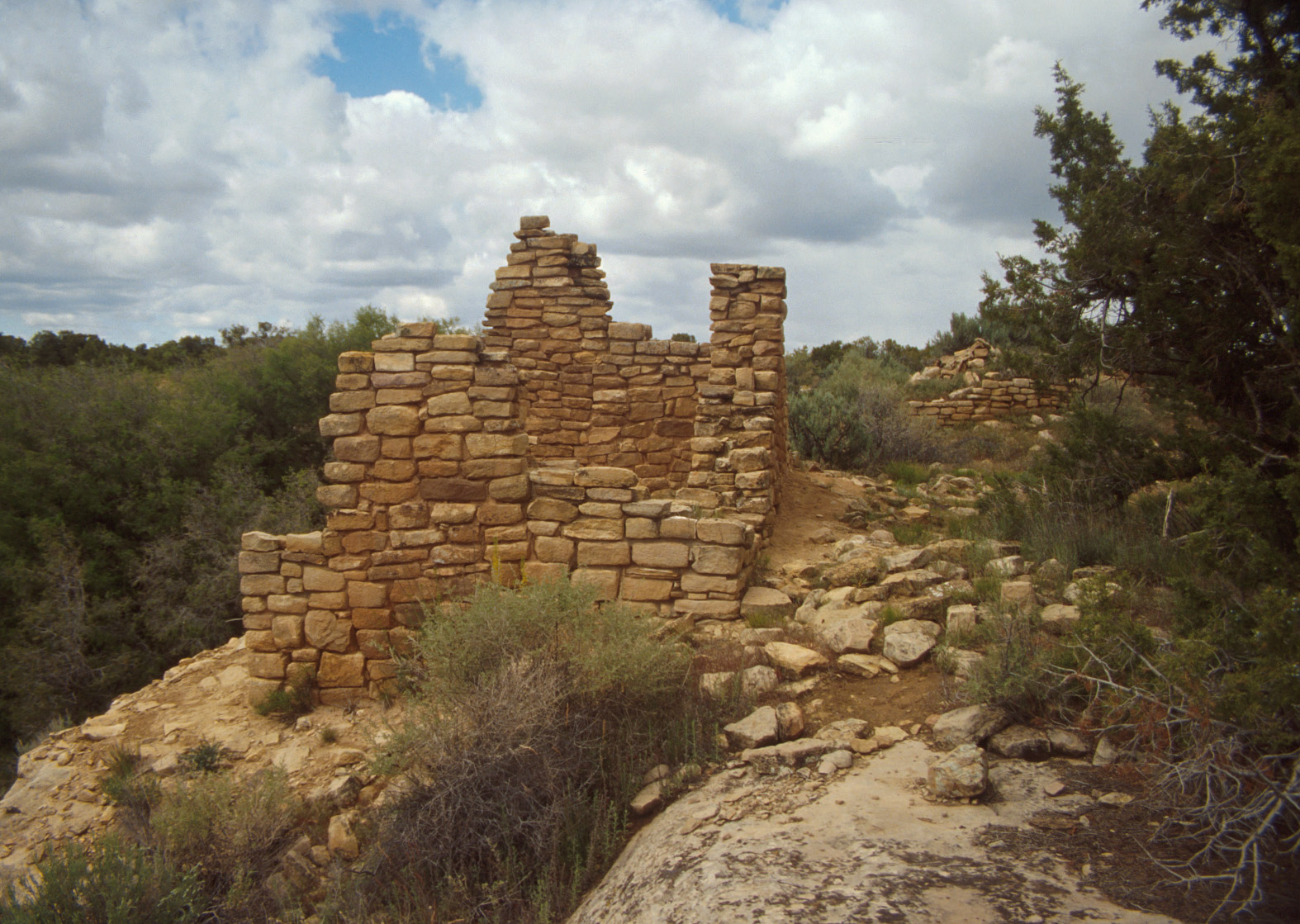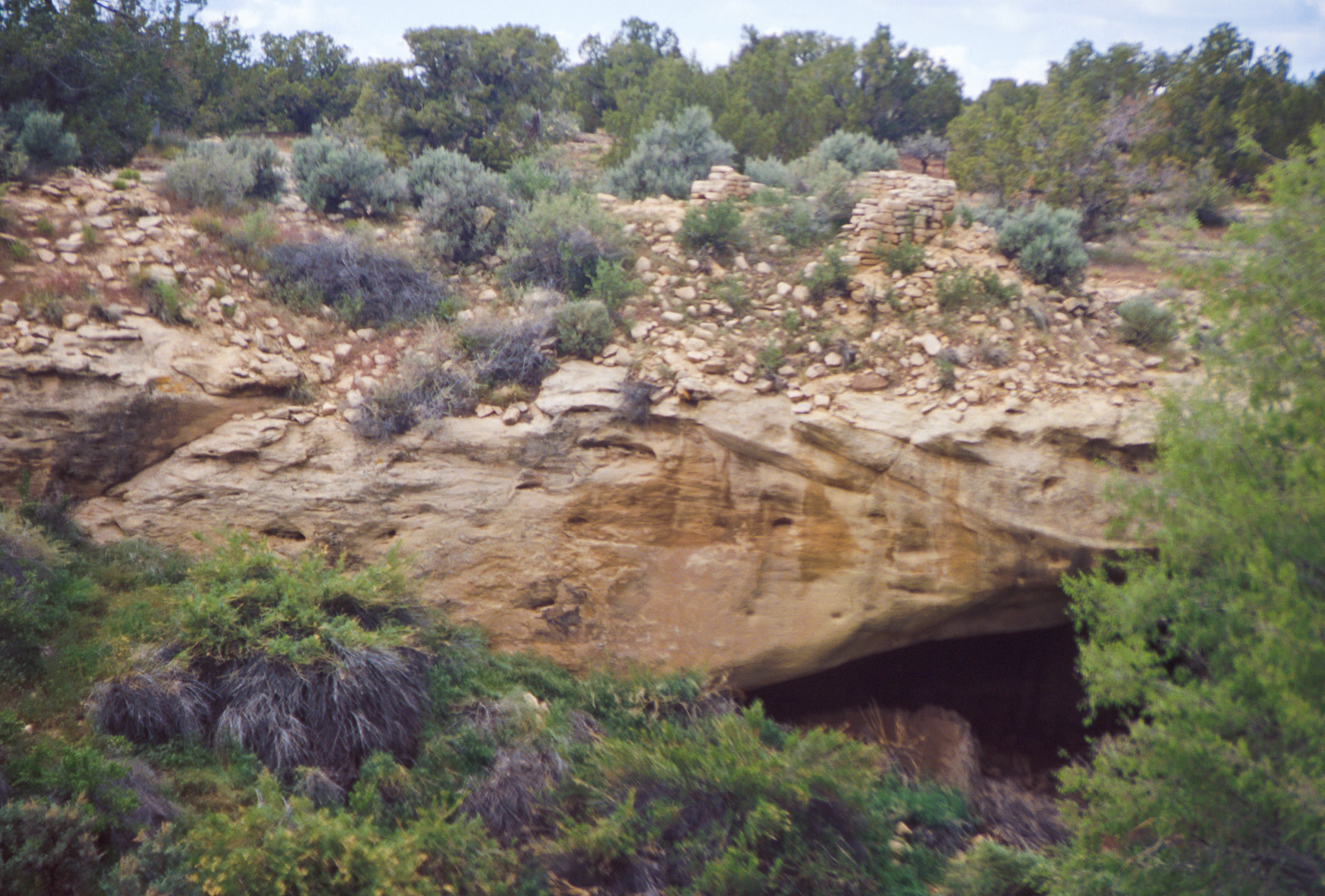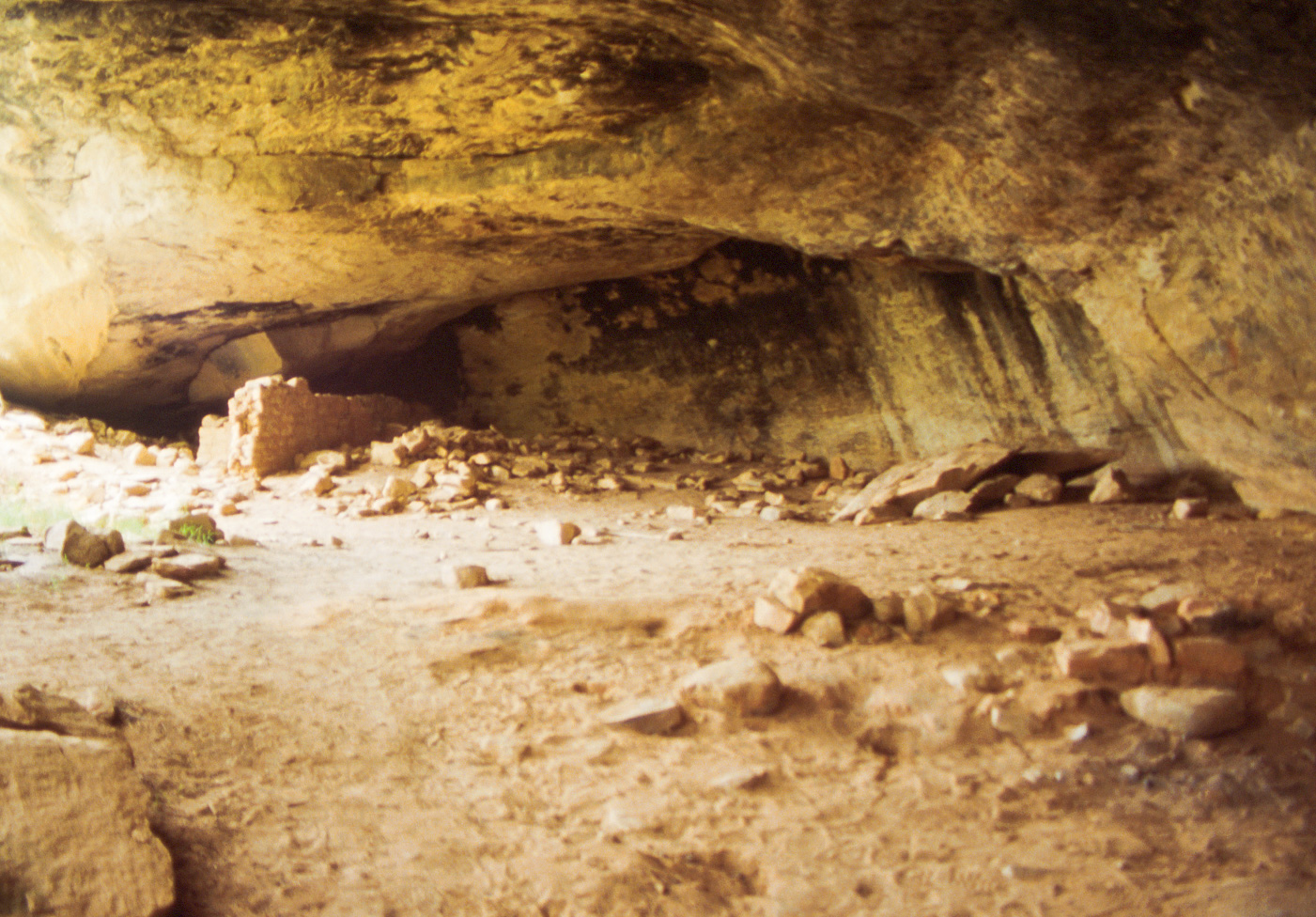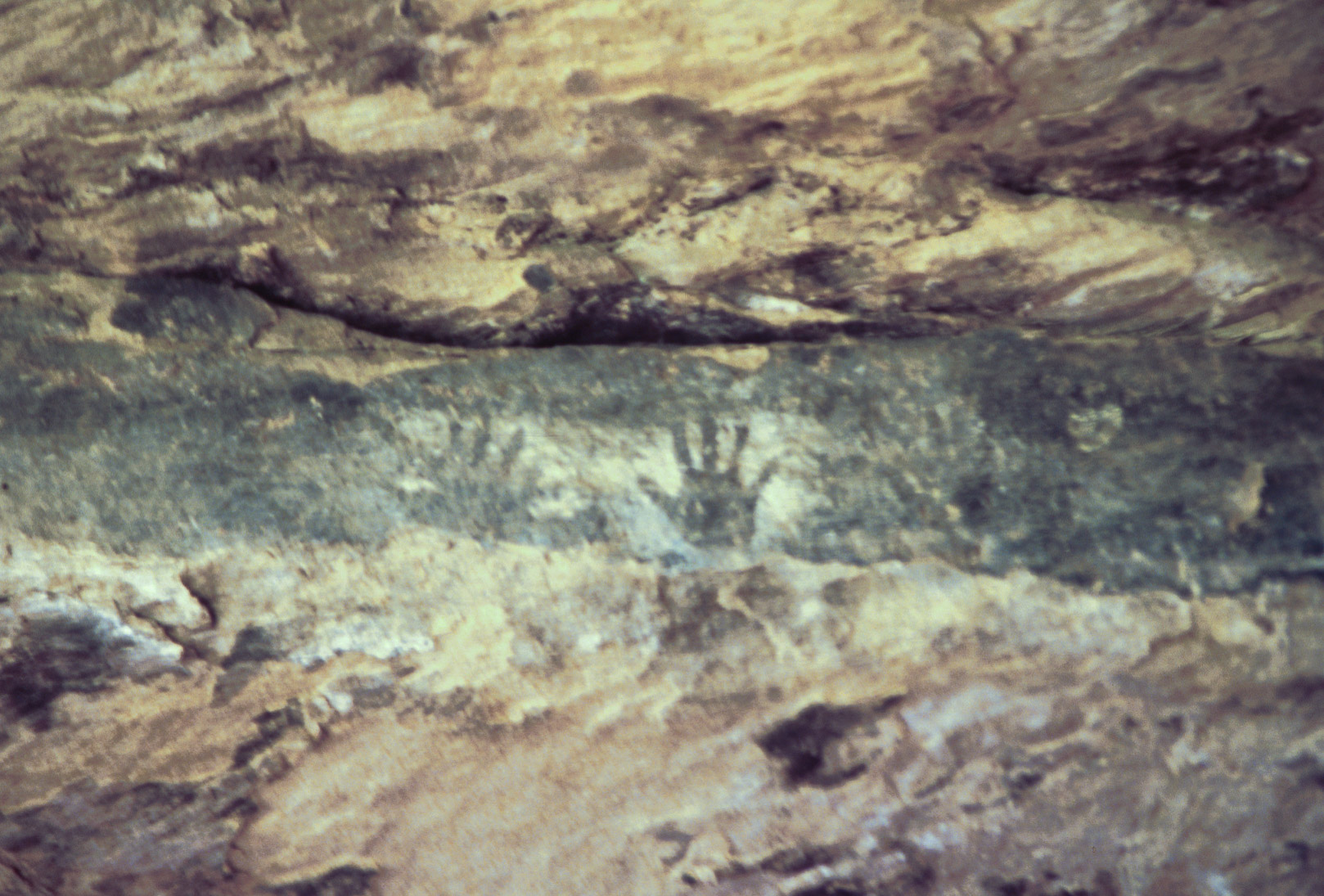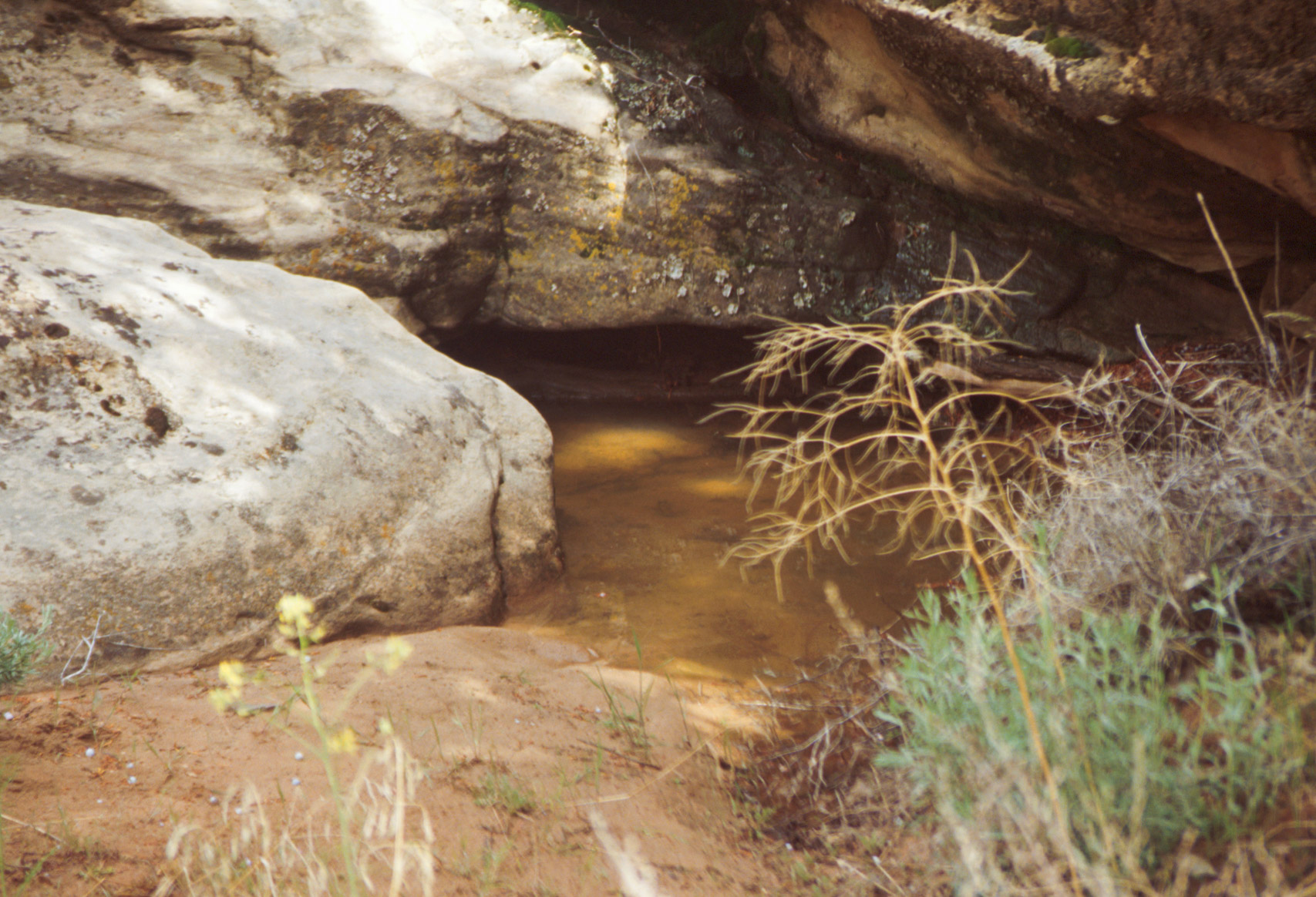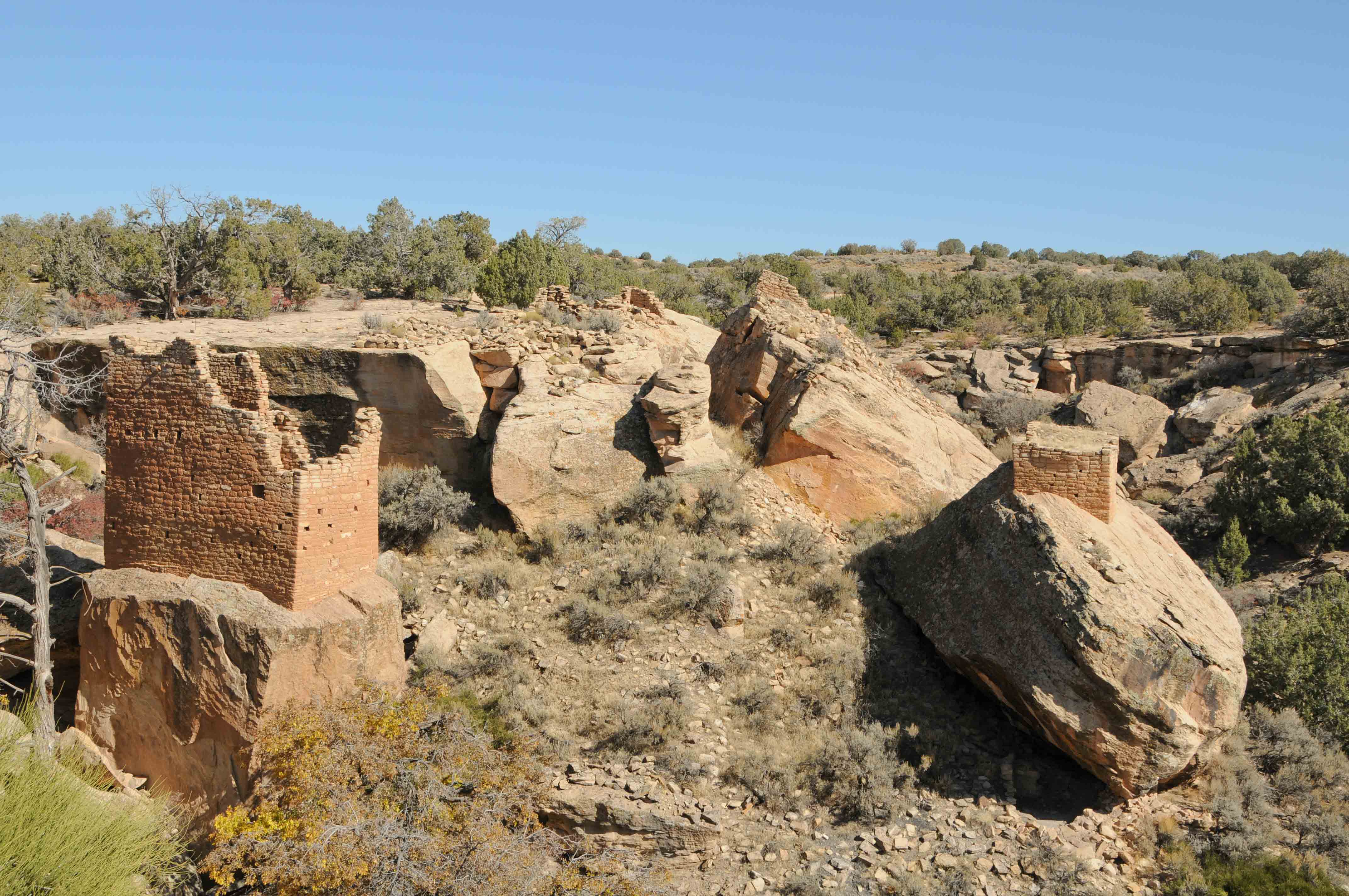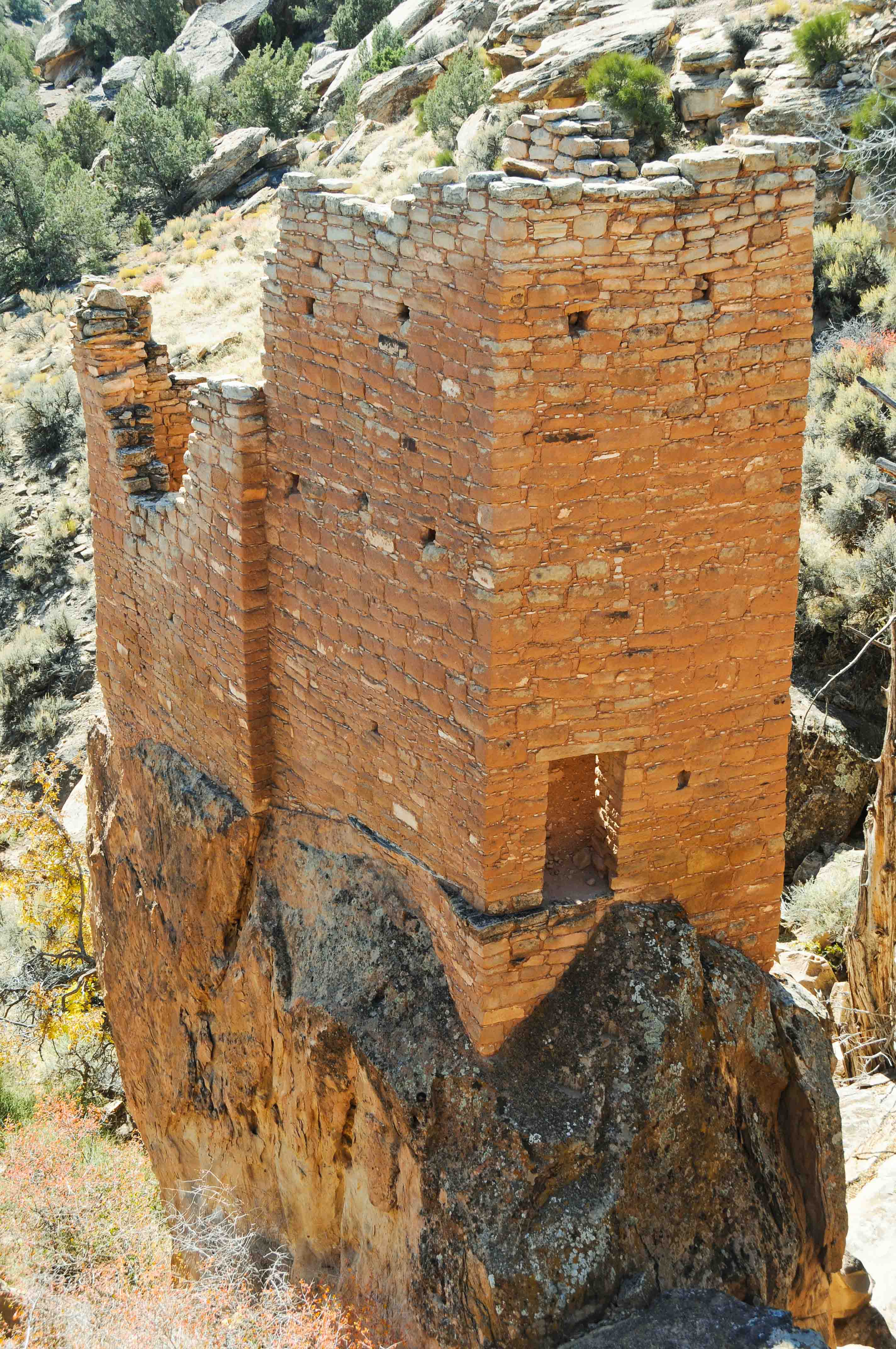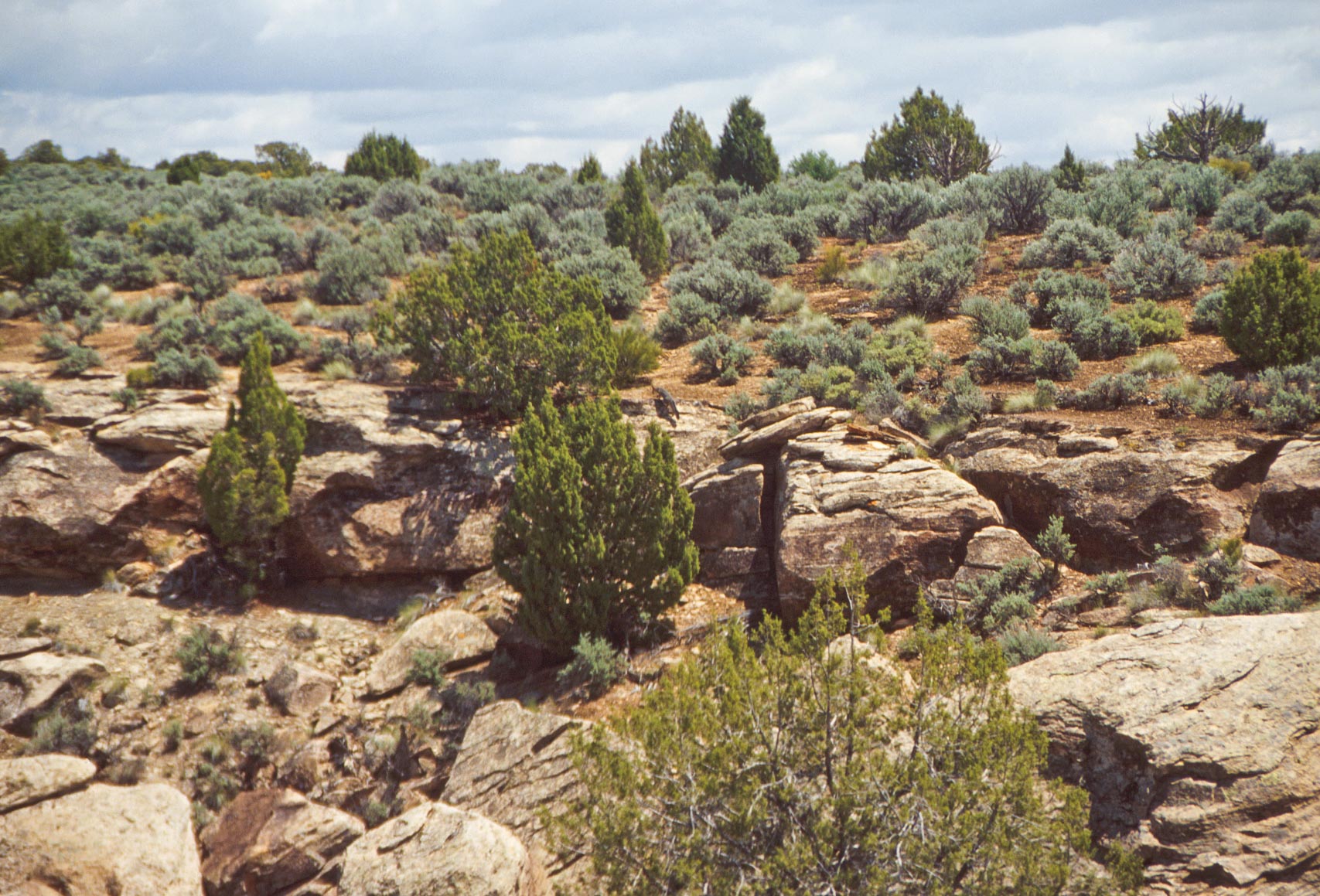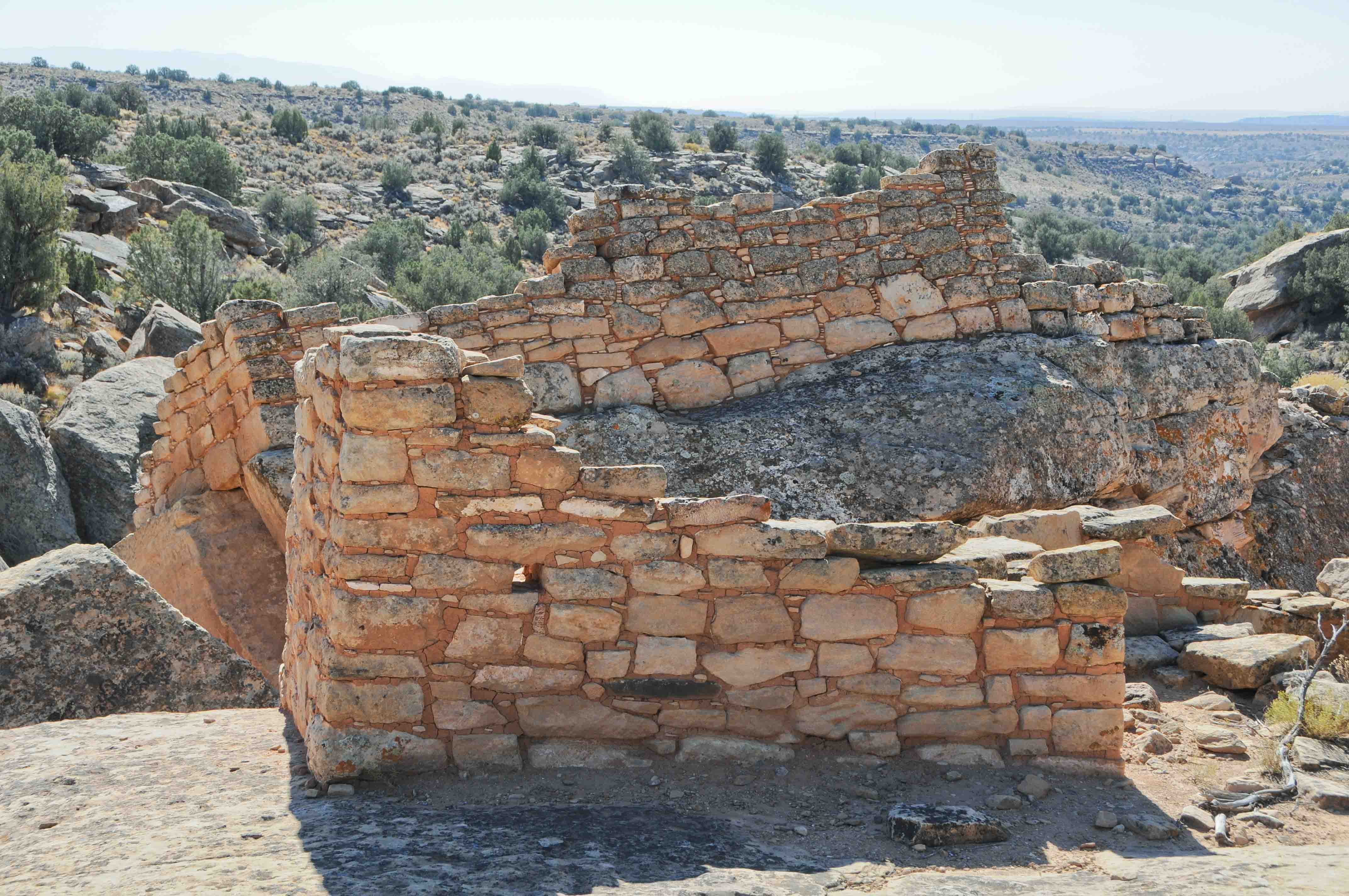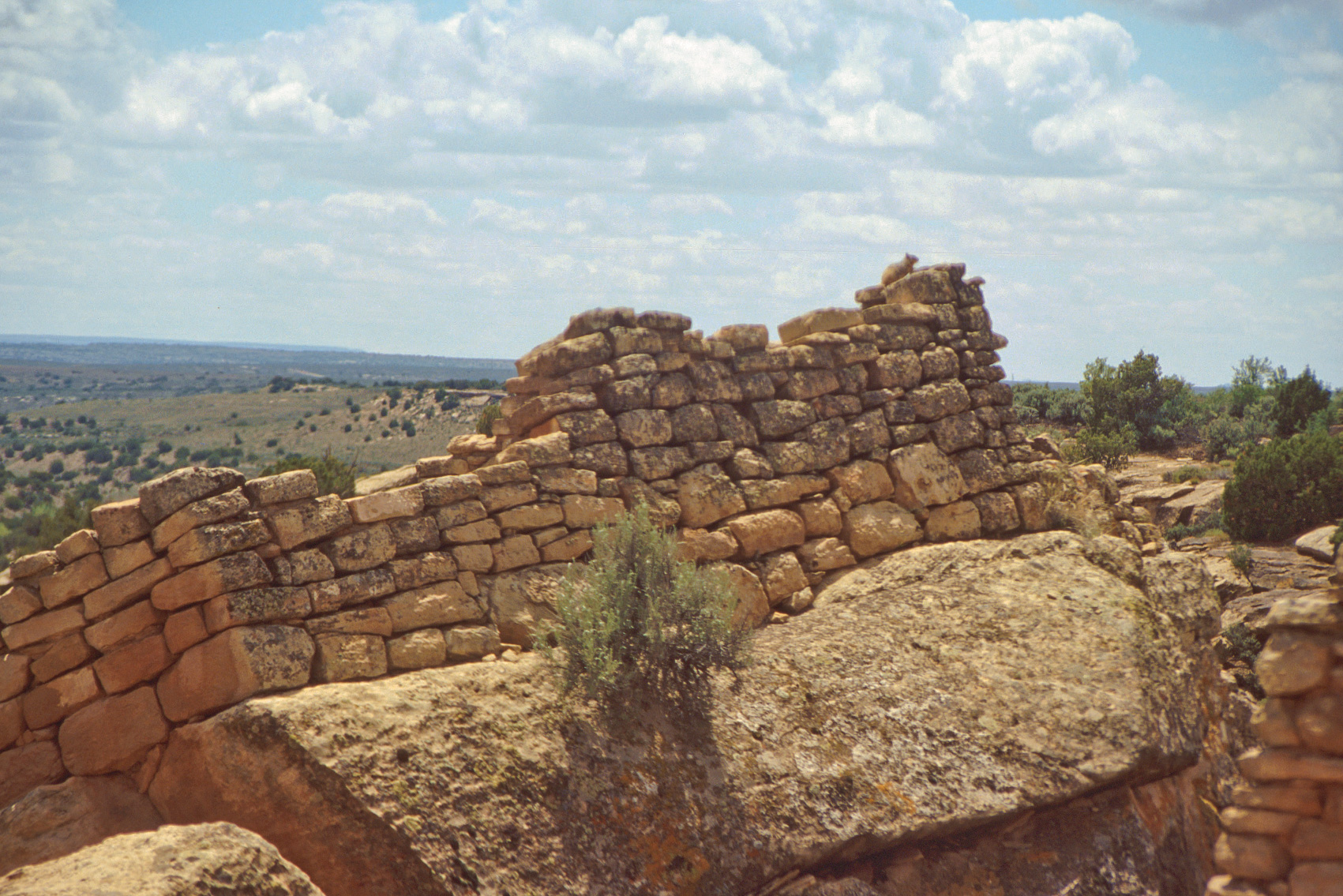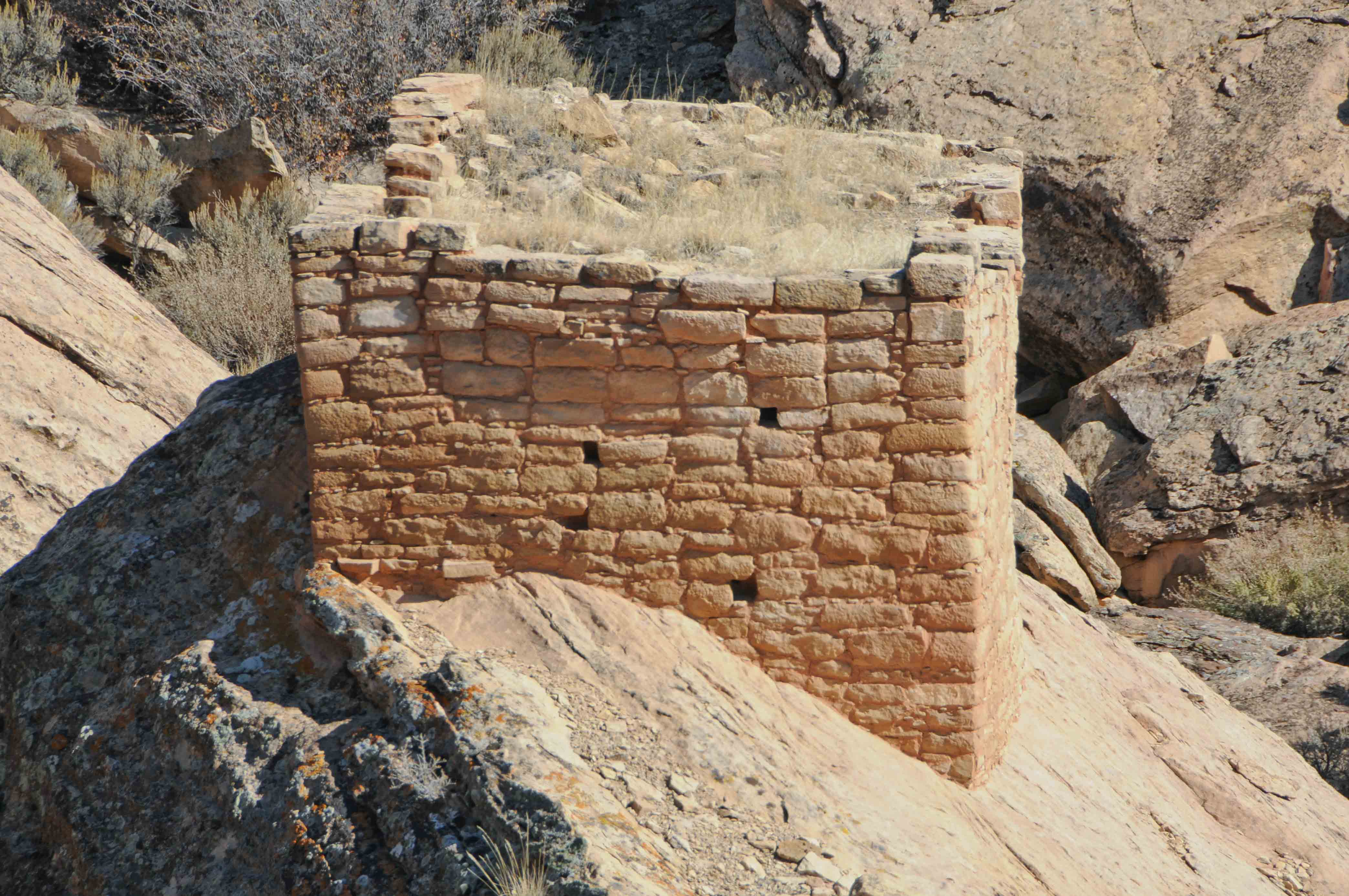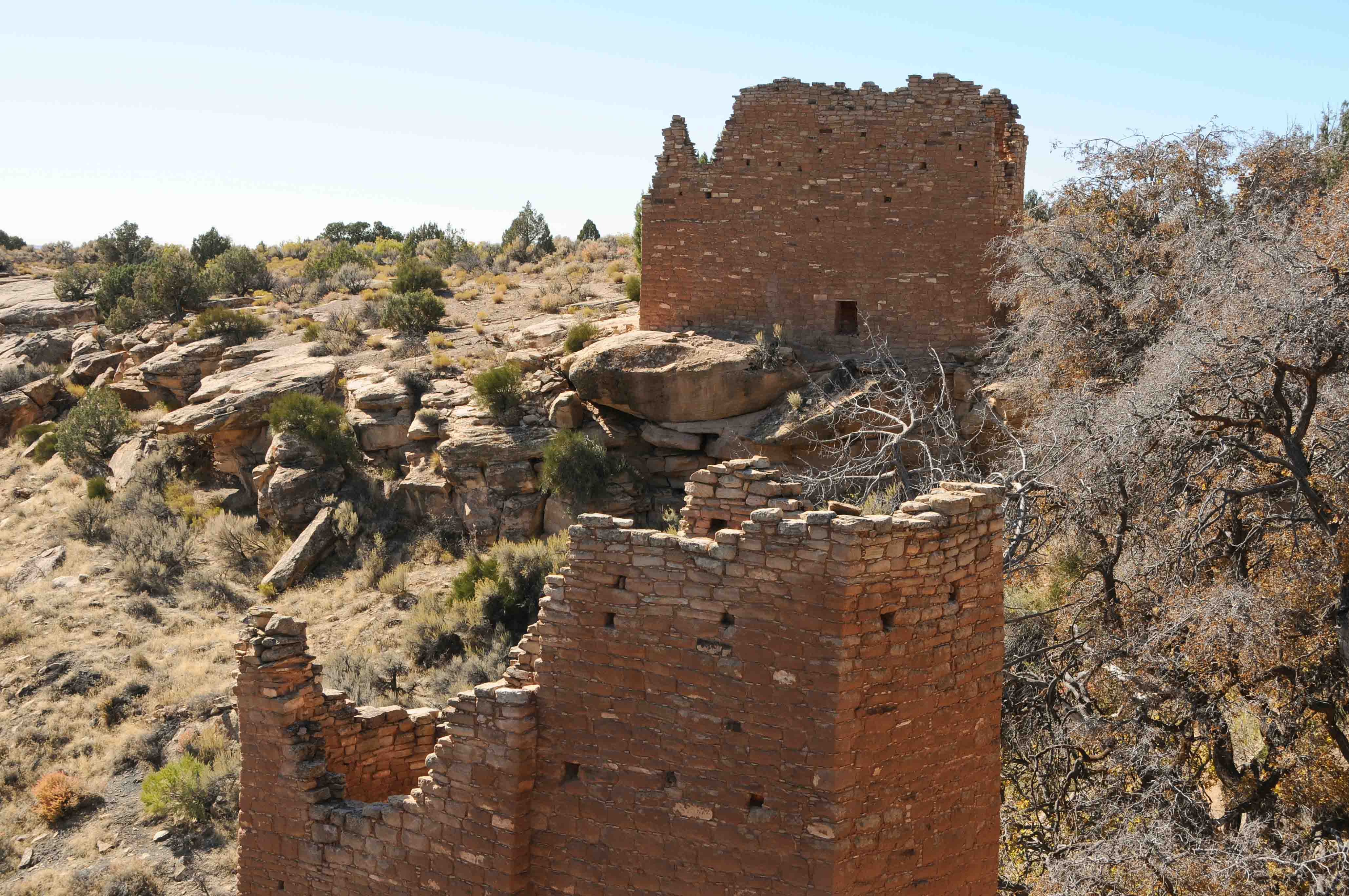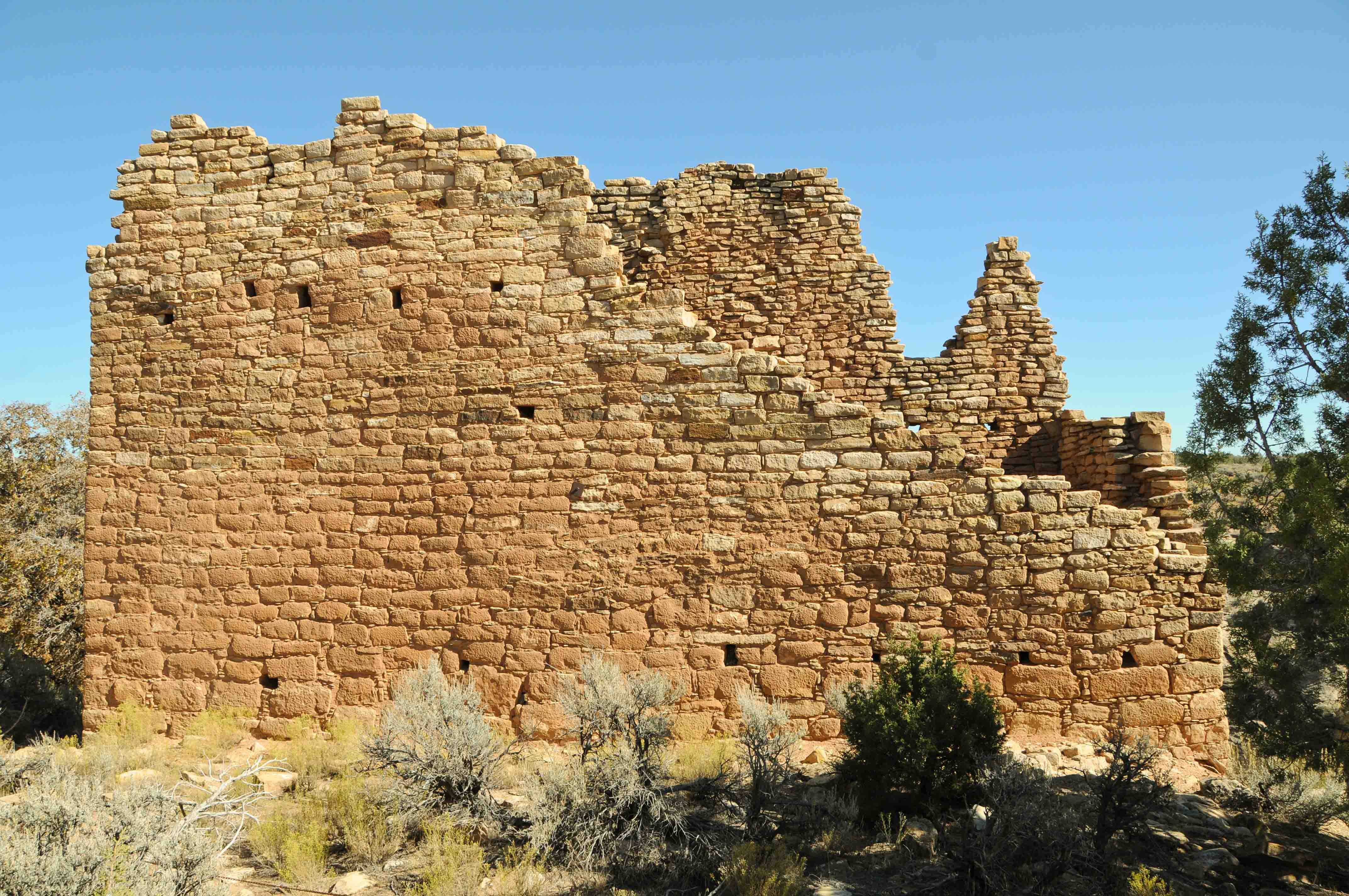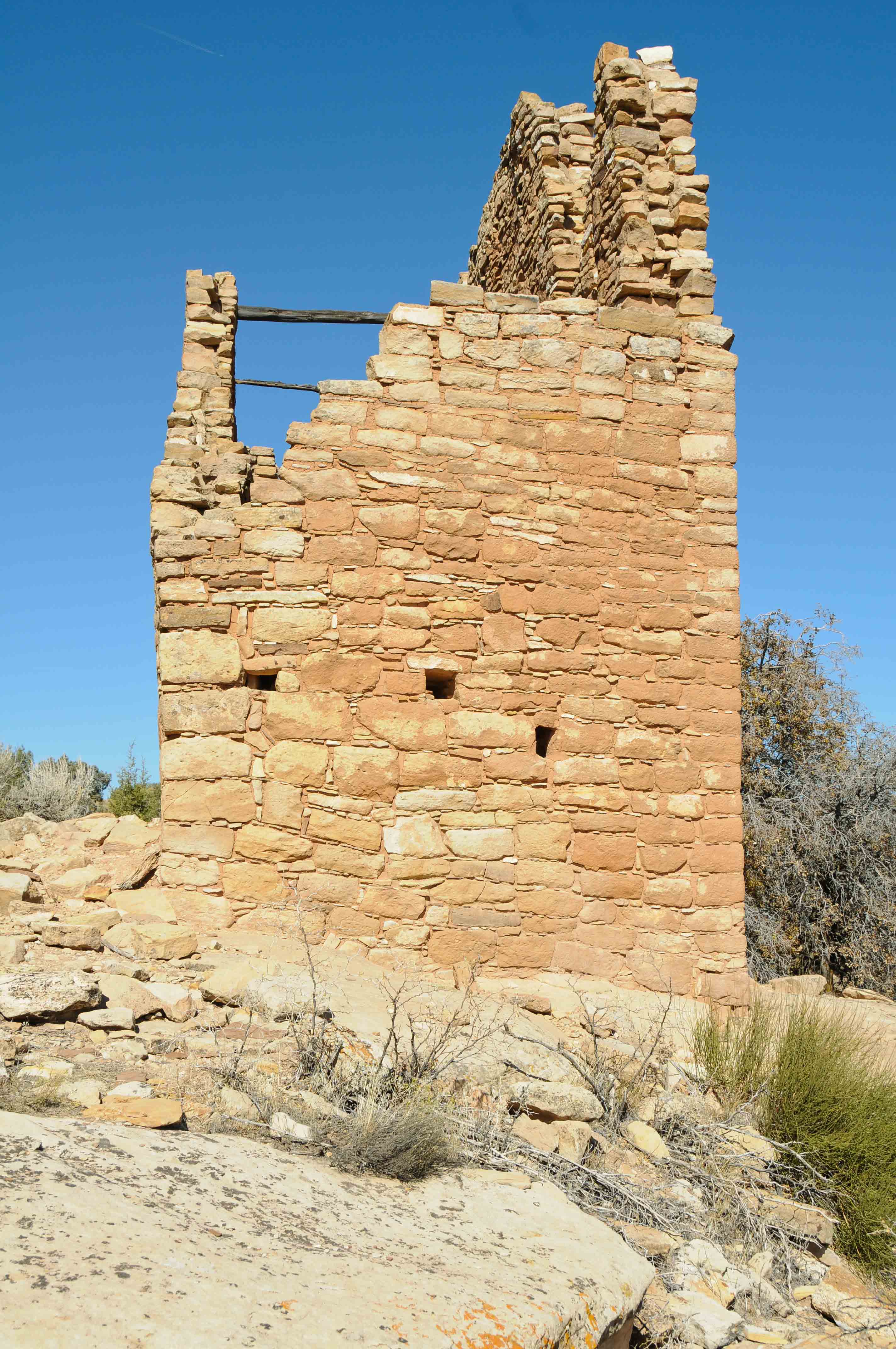Hovenweep National Monument
Hovenweep National Monument is located both in southwestern Colorado and southeastern Utah about 45 miles west of Cortez, CO. Hovenweep became a National Monument in 1923 and is administered by the National Park Service. The National Monument contains seven groups of of Ancestral Puebloan villages that were occupied from about 1100 to 1300 A.D. (Pueblo III period). These are the Square Tower group, Goodman Point group, Cajon group, Cutthroat Castle group, Horseshoe group, Hackberry group, and Holly group. The Horseshoe and Hackberry groups are often considered one unit since they are located within 500 yards of each other. The Square Tower and Cajon groups are located in Utah and the remainer are in Colorado. We will visit all but the Goodman Point group during this tour.
Square Tower Group
Square Tower Group is the largest collection of pueblo buildings at
Hovenweep and was populated with up to 500 people. It is located in Little Ruin Canyon. Towers at Hovenweep were
built in a variety of shapes; D-shapes, squares, ovals and circles and for several purposes,
including tool and grinding work areas, kivas for ritual functions, residential rooms and storage.
Towers have limited access, contain few windows and many have narrow slots or peepholes placed in the walls.
The slots and doors of Hovenweep Castle, in Square Tower Group, may have been designed as a solar calendar.
The building is aligned so that light is channeled through openings into the building at sunset of the summer solstice,
the winter solstice and the spring and fall equinox. The light falls in a predictable pattern on interior door lintels.
Cajon Group
Cajon group, located in Allen Canyon, is similar in configuration to
Holly, Hackberry and Horseshoe in that it is located at the head of a canyon with a spring.
It consists of a cluster of room blocks and up to seven kivas built on both sides of the canyon.
There is also a circular tower built on and around several large boulders.
Cutthroat Castle Group
Cutthroat Castle group is located in an offshoot of
Hovenweep Canyon about 8 miles northeast of the Hovenweep Ranger Station. The Cutthroat Castle group is
not located at the head of a canyon like other units, but further downstream. It contains three round towers,
a square tower with attached rooms, and the most kivas of any of the units. Cutthroat Castle, the largest
of the ruins, is on the north side of the stream. It was a 3-story horseshoe shaped house. A central kiva
was partly surrounded by a wall and connected to a rectangular tower. A tunnel leads through a crevice in
the bedrock to a two-story rounded room.
Horseshoe and Hackberry Groups
Horseshoe was a small pueblo located a mile northeast of
Holly at the head of Horseshoe Canyon. The Horseshoe group has roomblocks located in the canyon and probable ceremonial
structures on the east and west sides of the canyon. Horseshoe Ruin had a dam at the head of the canyon to create a reservoir.
The most significant ruin, Horseshoe House, is a D-shaped structure containing three rooms around a possible central kiva.
There is a kin kiva located in the overhang below Horseshoe House.
Hackberry was a medium sized Pueblo III village of about 250 to 350 people. It was built on the east branch of Hackberry Canyon
less than a mile east of Horseshoe. Hackberry contains room blocks clustered around 2 springs. One spring flows from a cave
at the canyon head while the other is located slightly to the east. Ruins are located both in the canyon and on its rim.
Holly Group
The Holly group is located at the head of Keeley Canyon about 2 miles northeast of the
Square Tower group. The Holly group is named for Jim Holley who had a ranch in the area in the late 1800s.
The five named buildings at the site are Curved Wall House, Great House (aka Holly House), Holly Tower,
Isolated Boulder House and Tilted Tower. Tilted Tower is located on the east side of the canyon and
Great House and Curved Wall House on the west side. Holly Tower is a two story building built on a boulder in the center
af the canyon. It has an entrance on the north side that was reached by hand and toe holds carved into the boulder.
Tilted Tower was built on a large sandstone boulder that shifted sometime after the Pueblo was abandoned causing the
upper stories to cruble into the canyon. Isolated Boulder House stands on a rock to the south of Tilted Tower House.
Background information was obtained from Wikipedia, the National Park Service,
and Anasazi Ruins of the Southwest in Color by Ferguson and Rohn.
TD Productions
Copyright © 2018 Use the form on the Home Page to submit comments, questions, or suggestions.
